

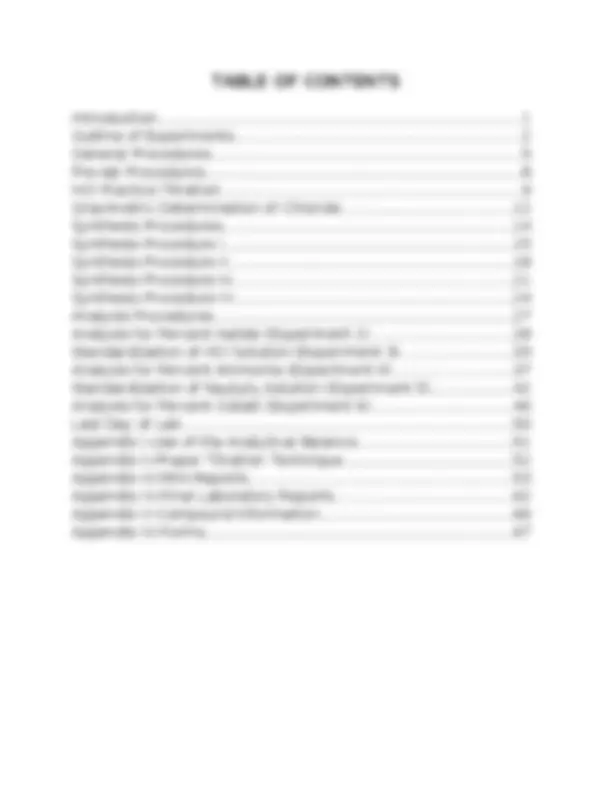
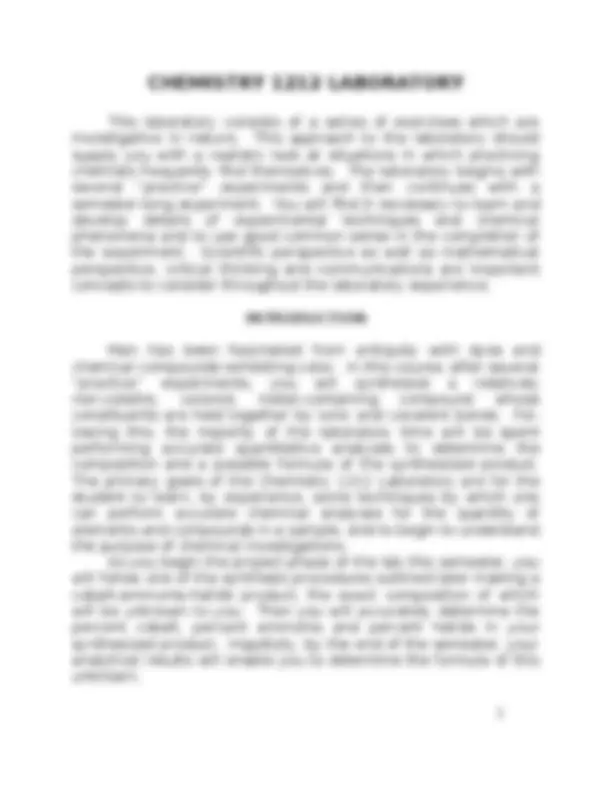
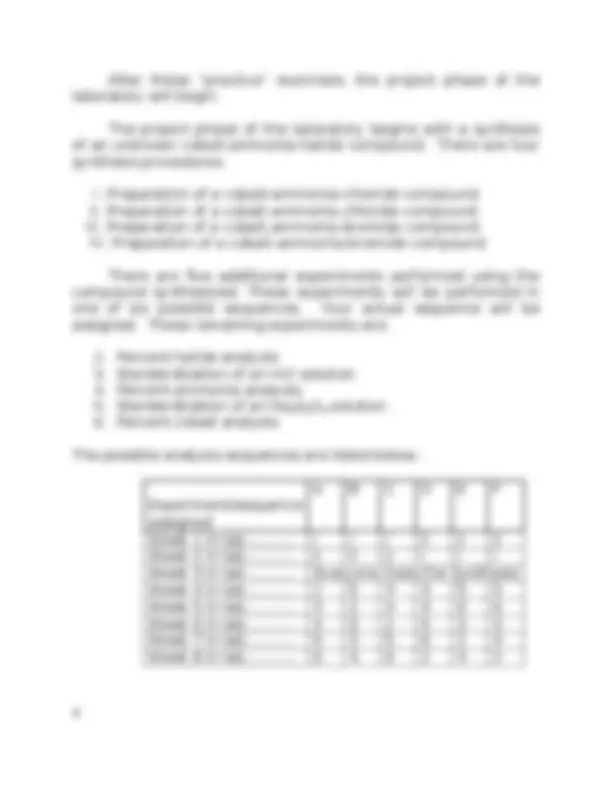
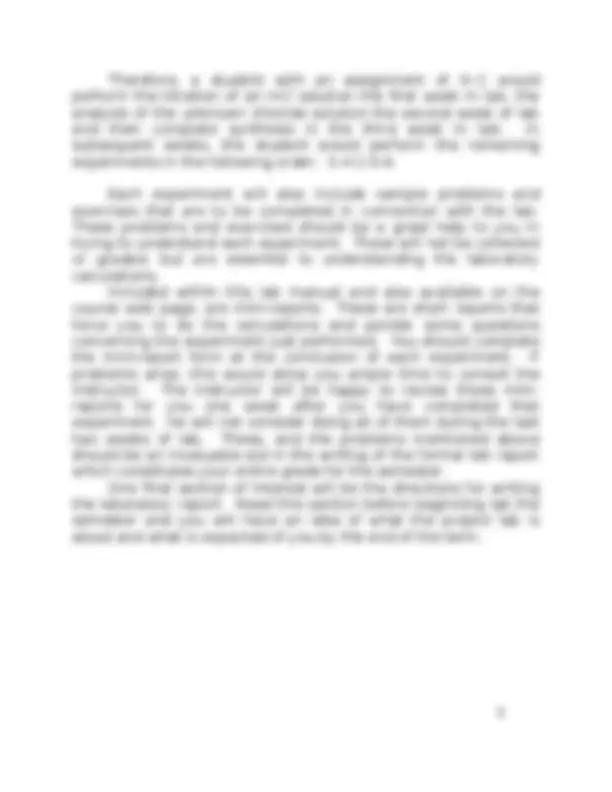
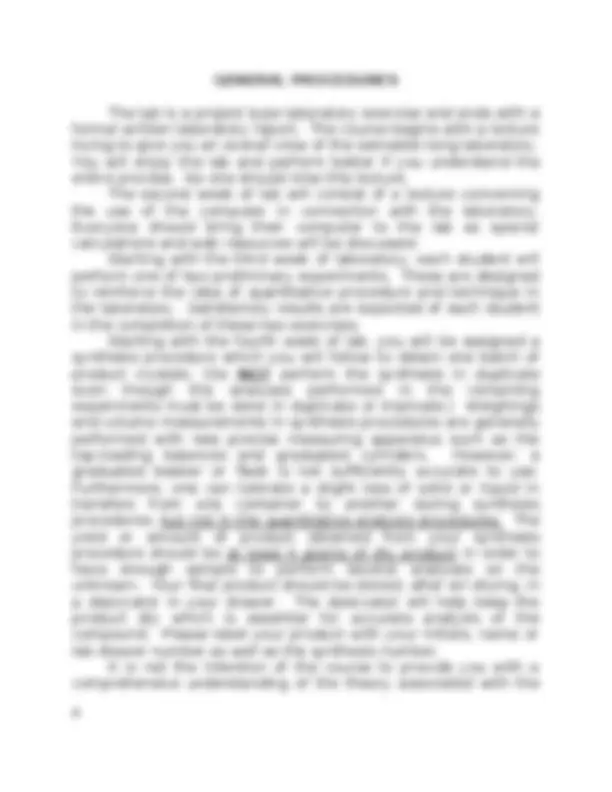
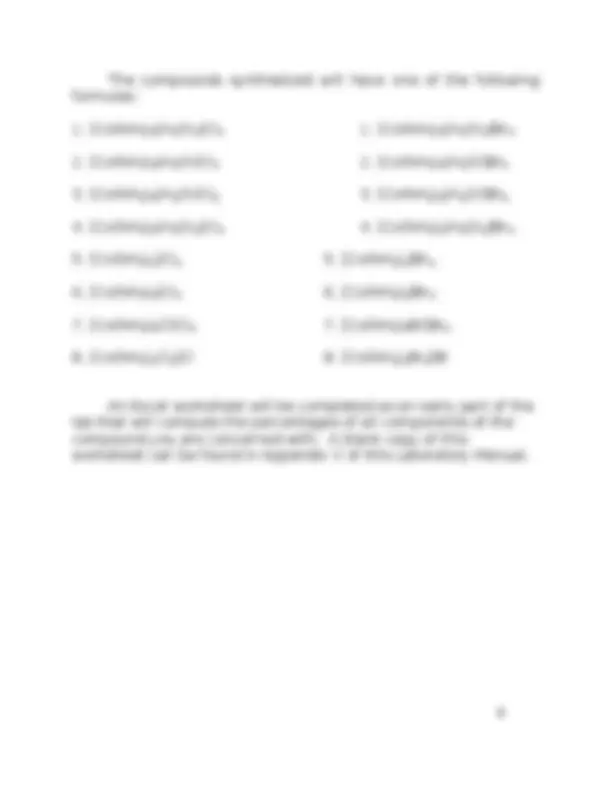
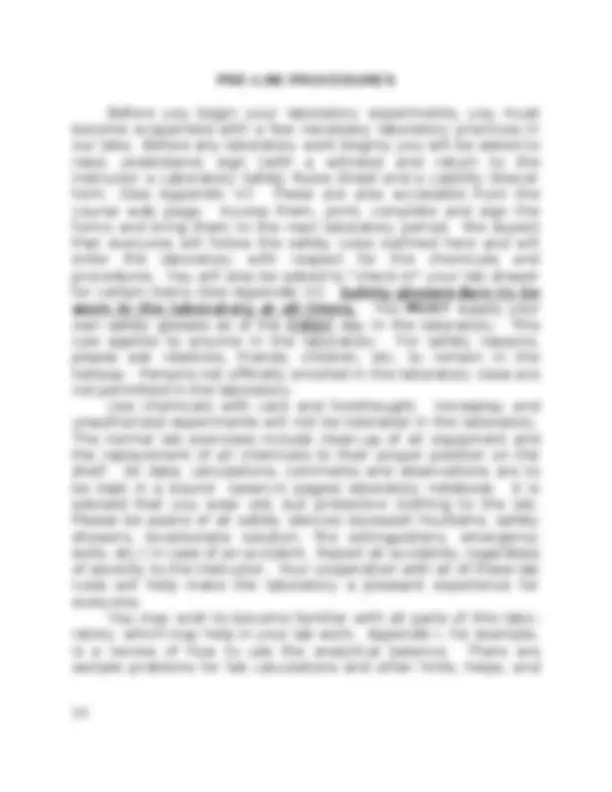

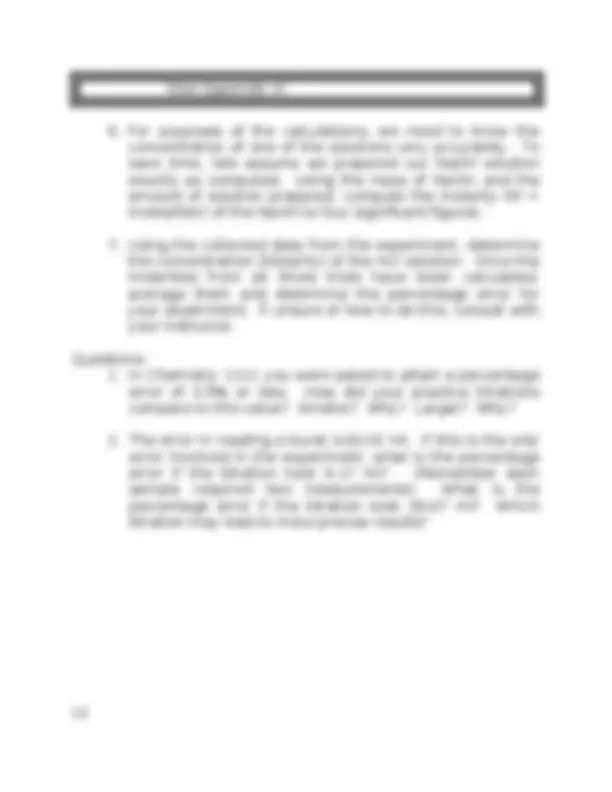
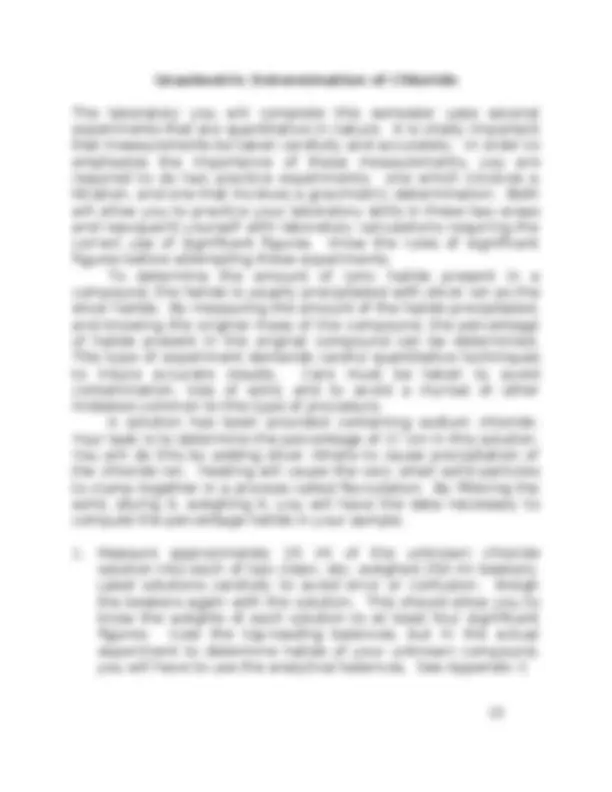
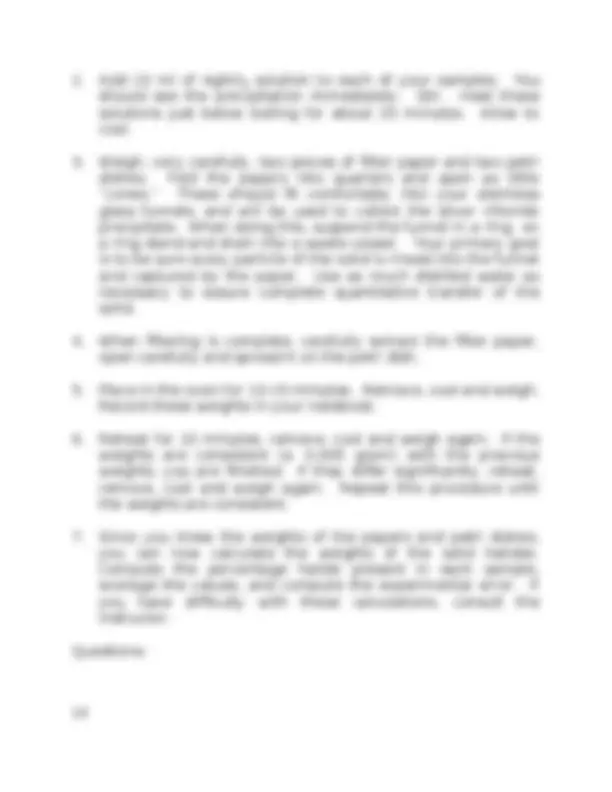
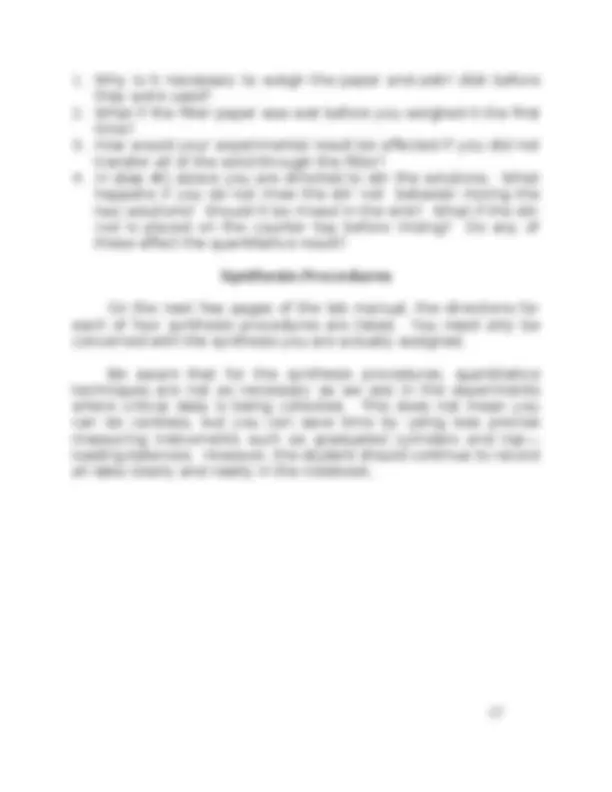
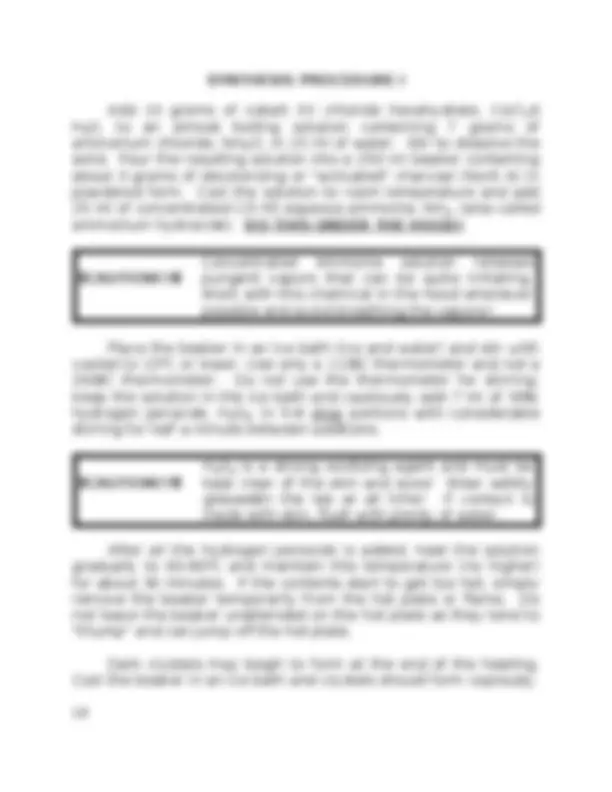
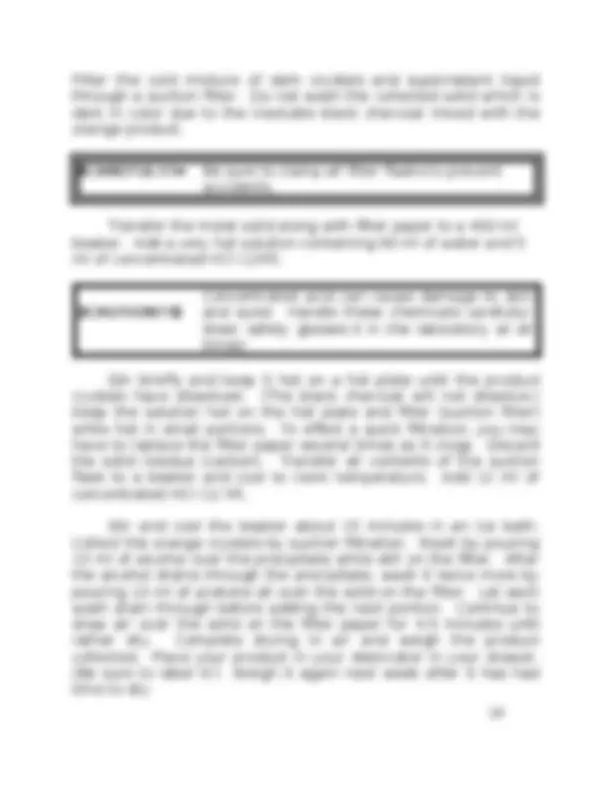
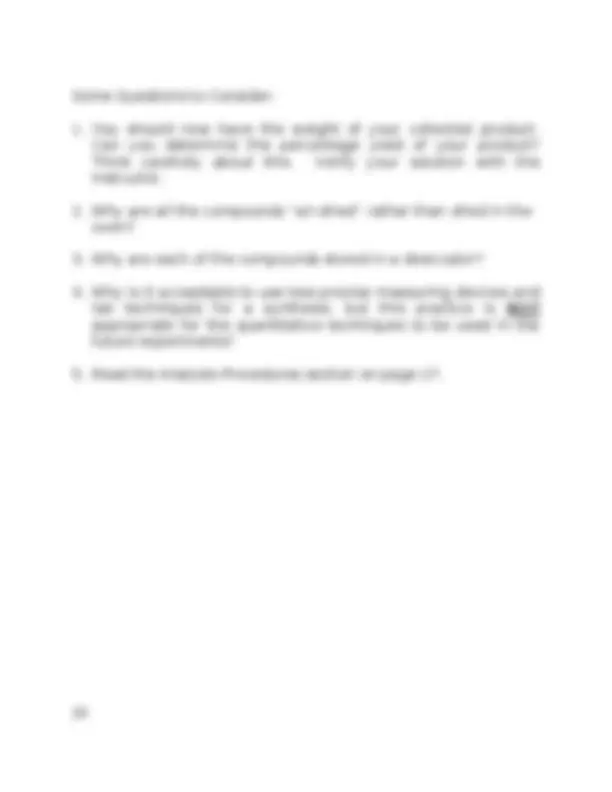
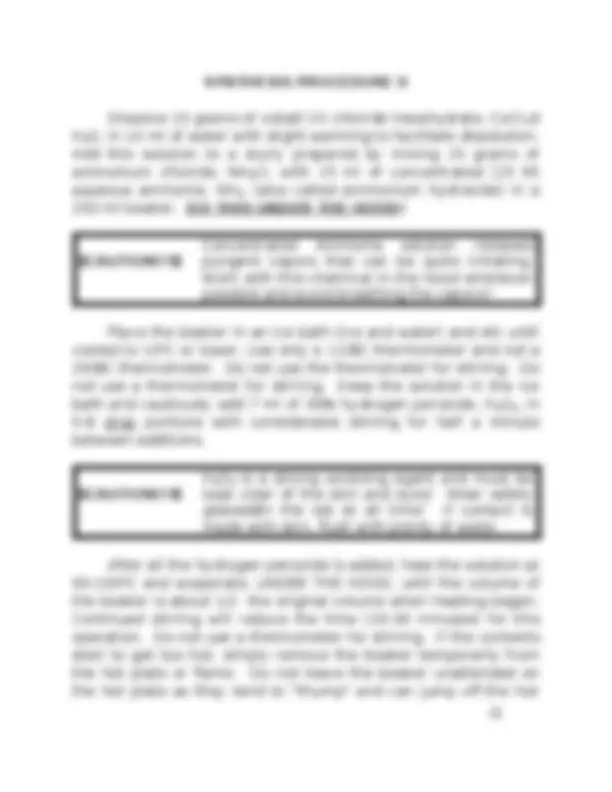
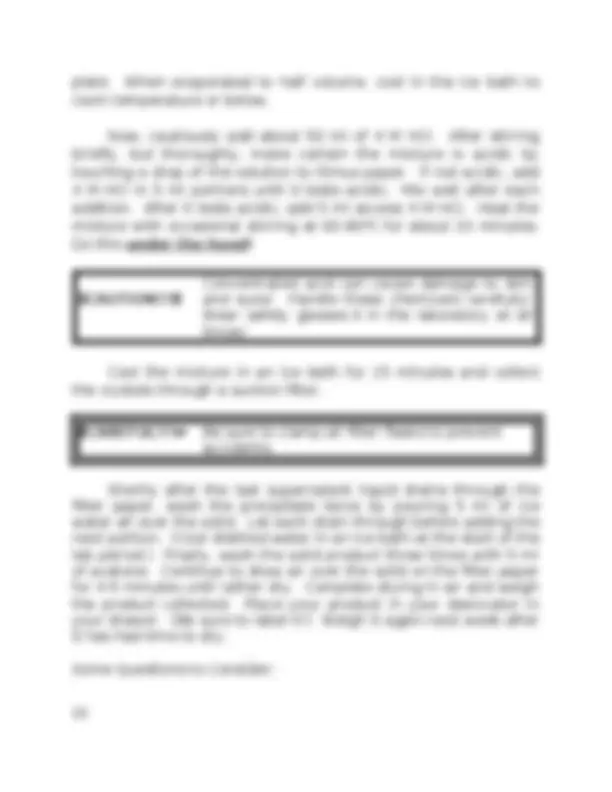
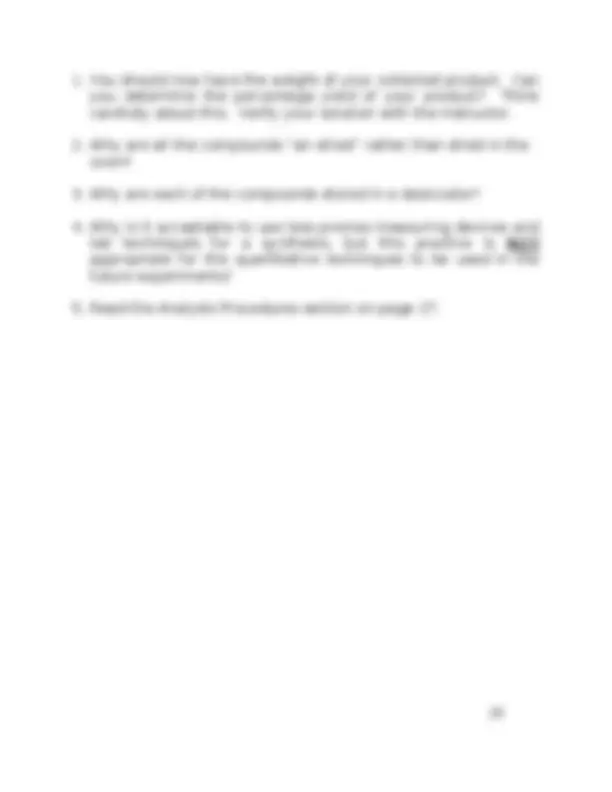

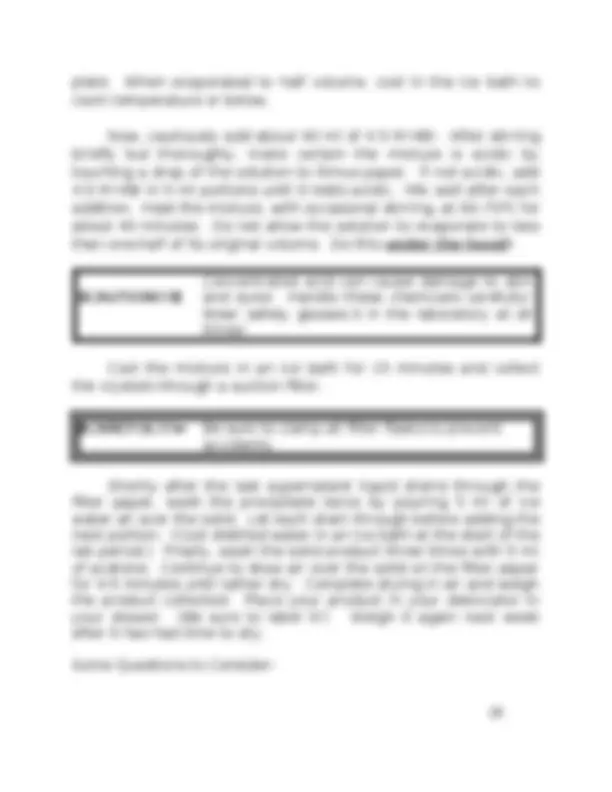
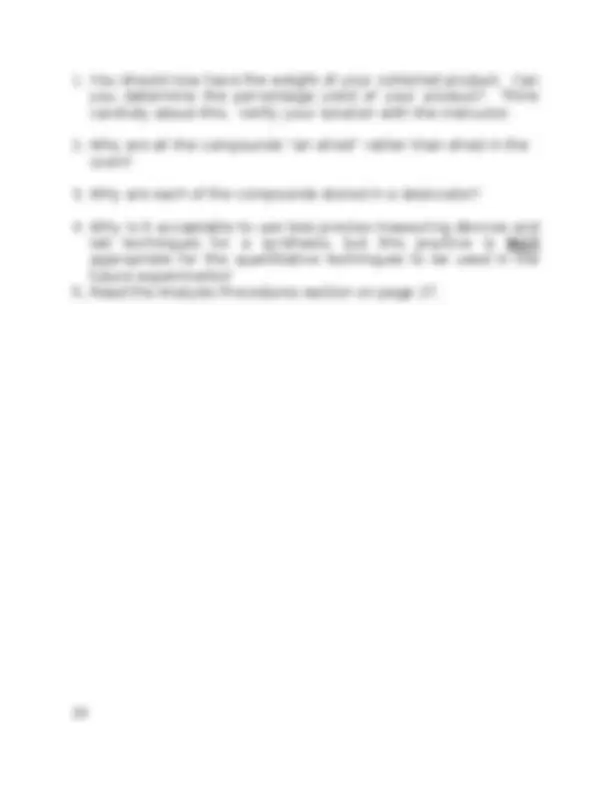
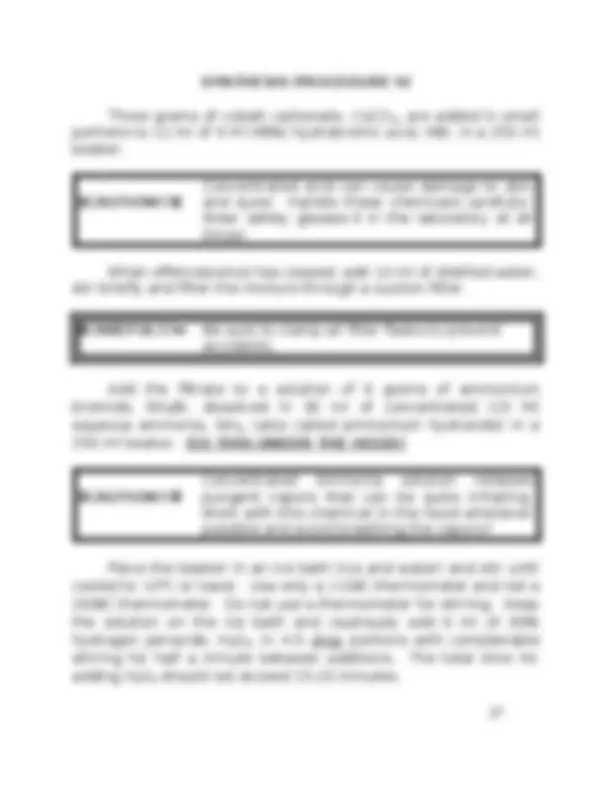
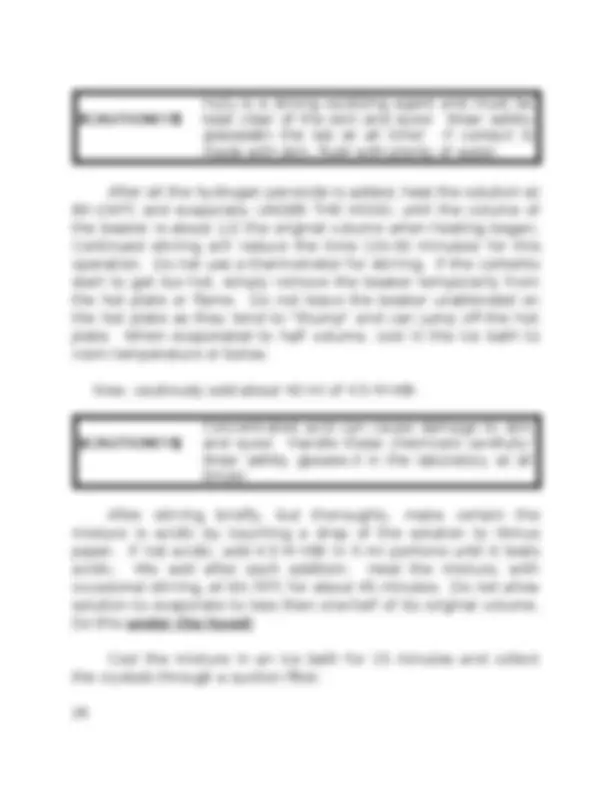
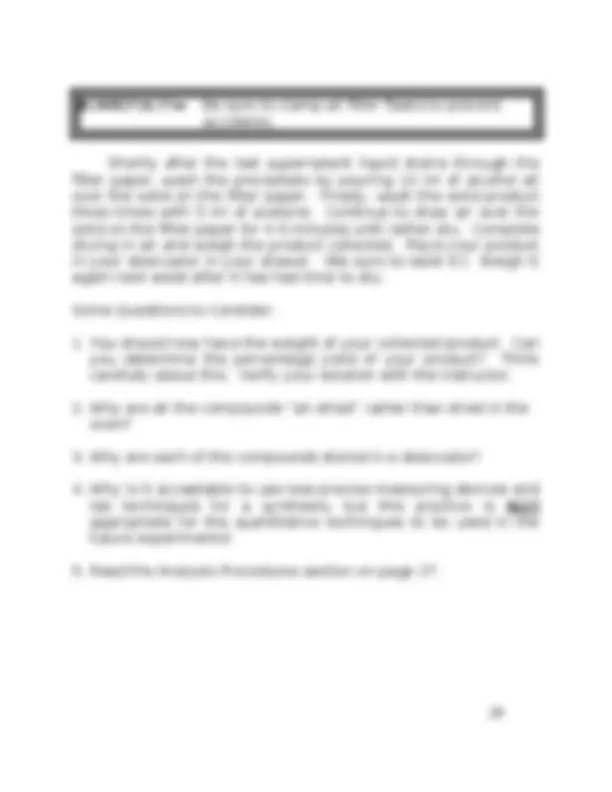
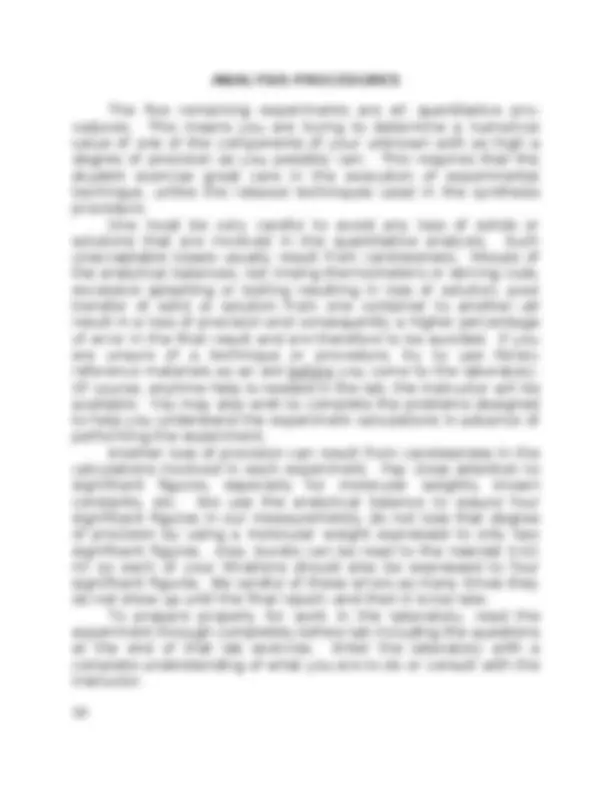
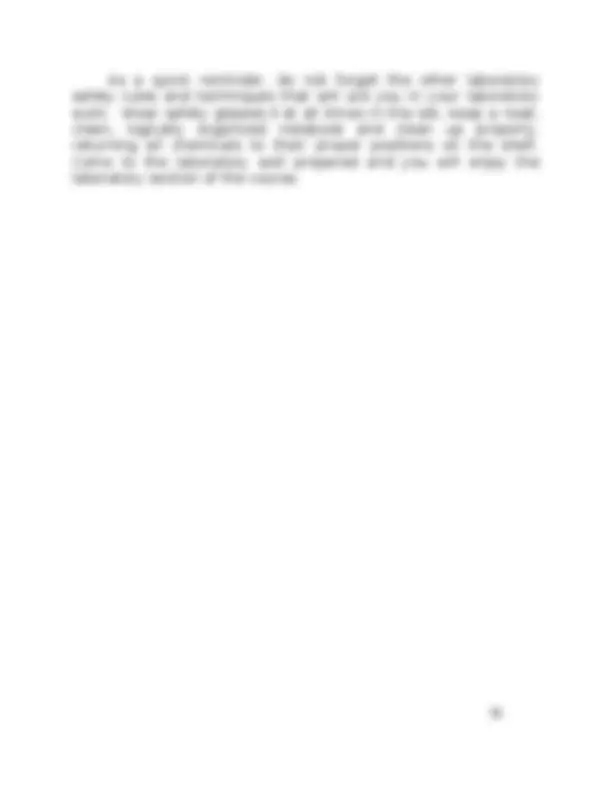
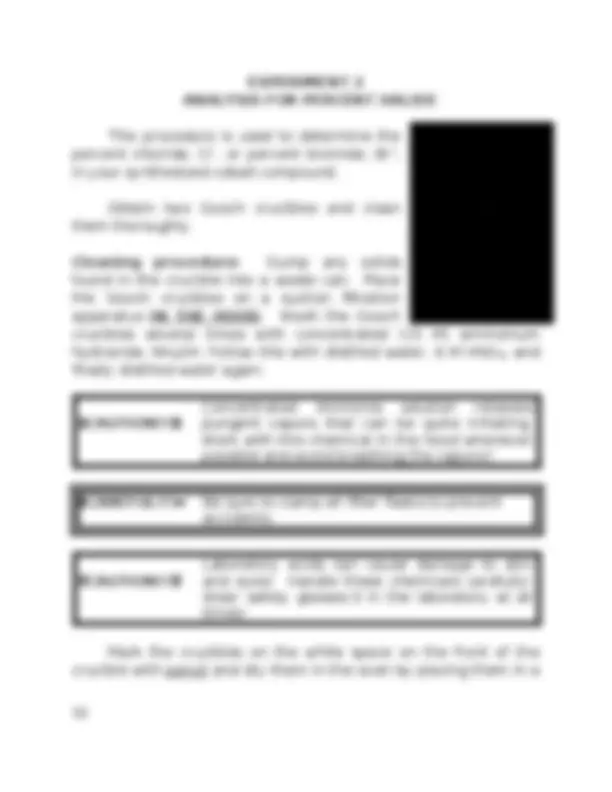
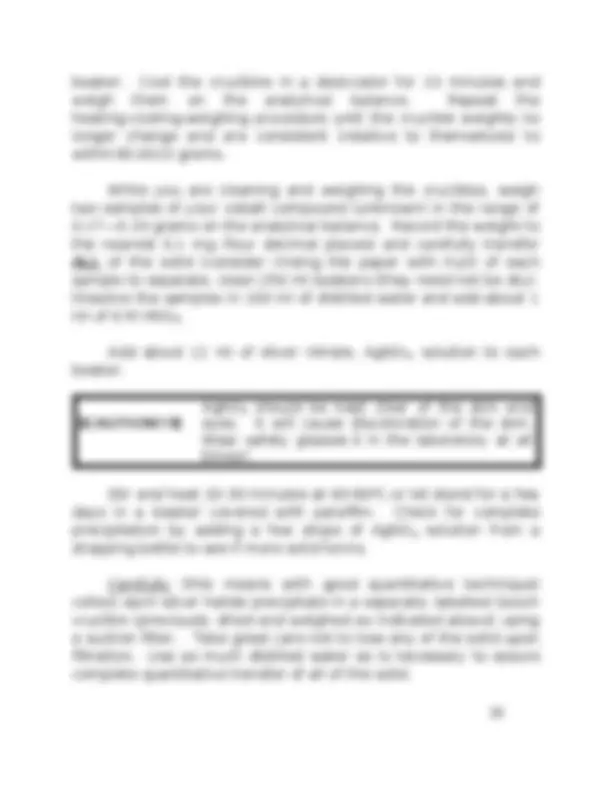
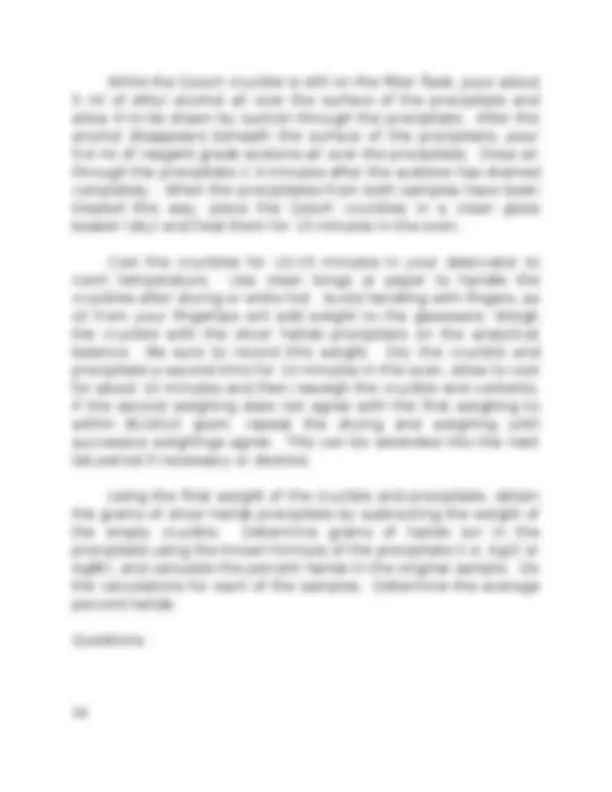
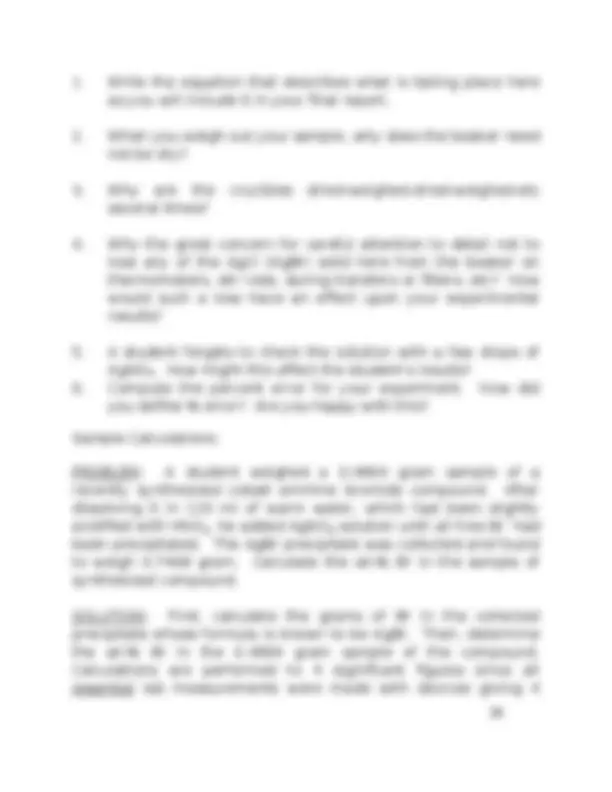
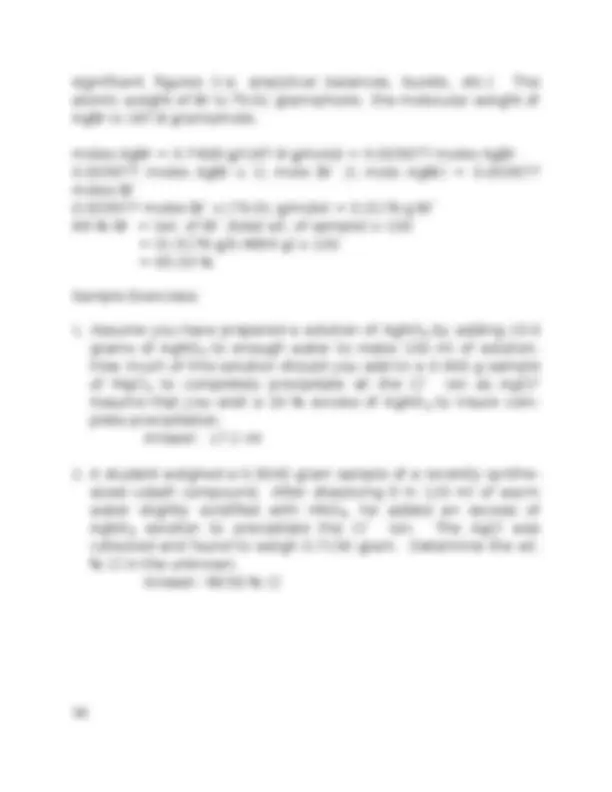

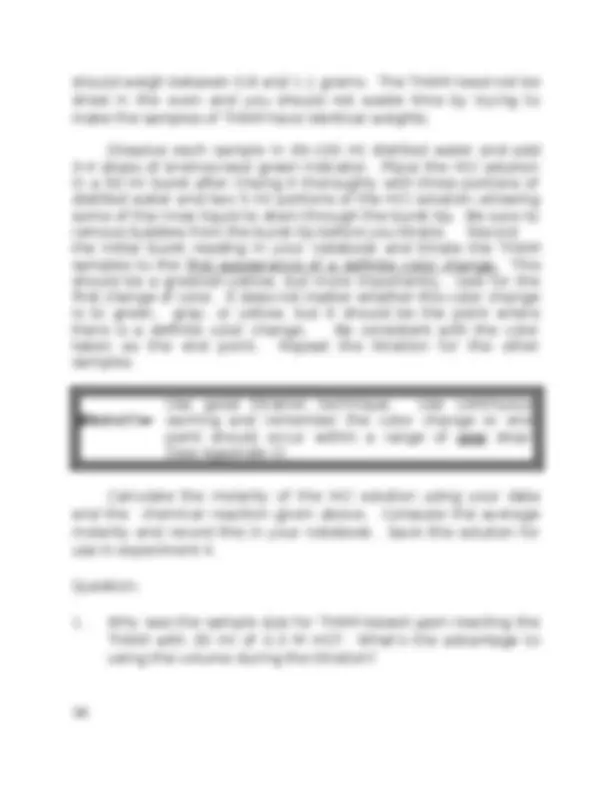
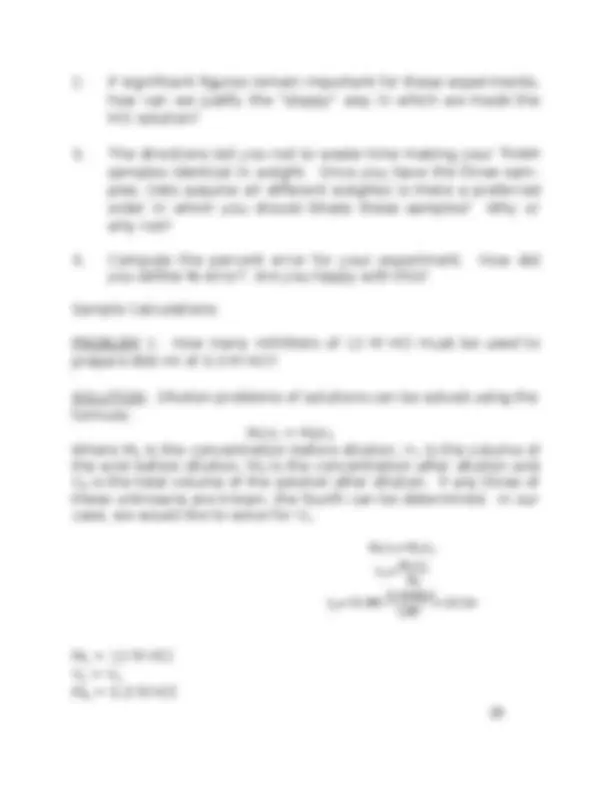
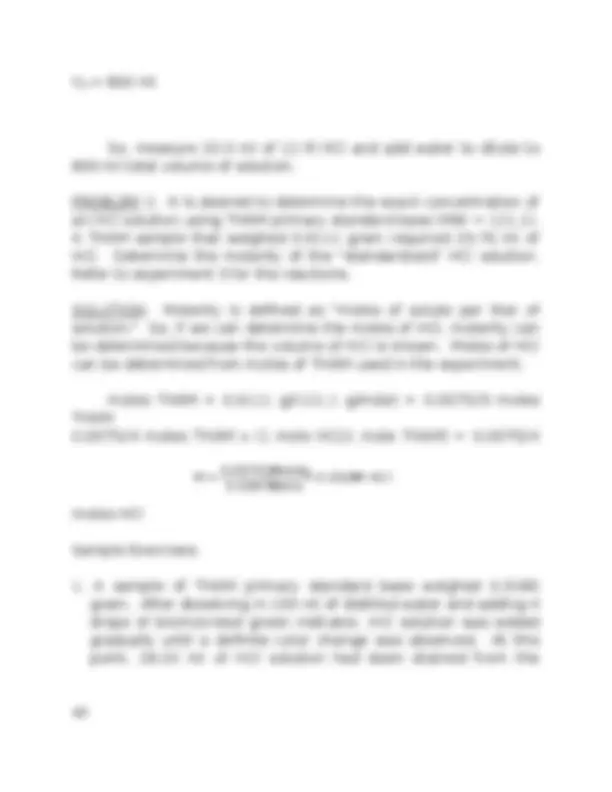
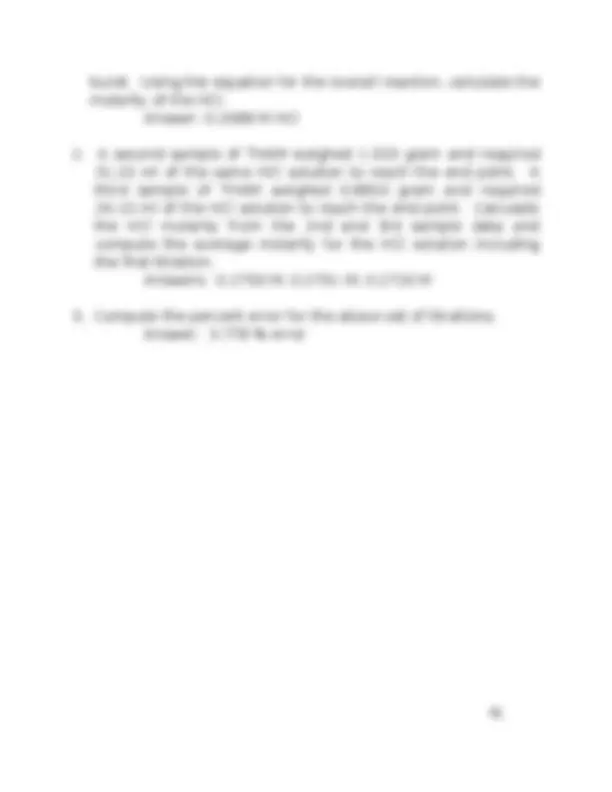
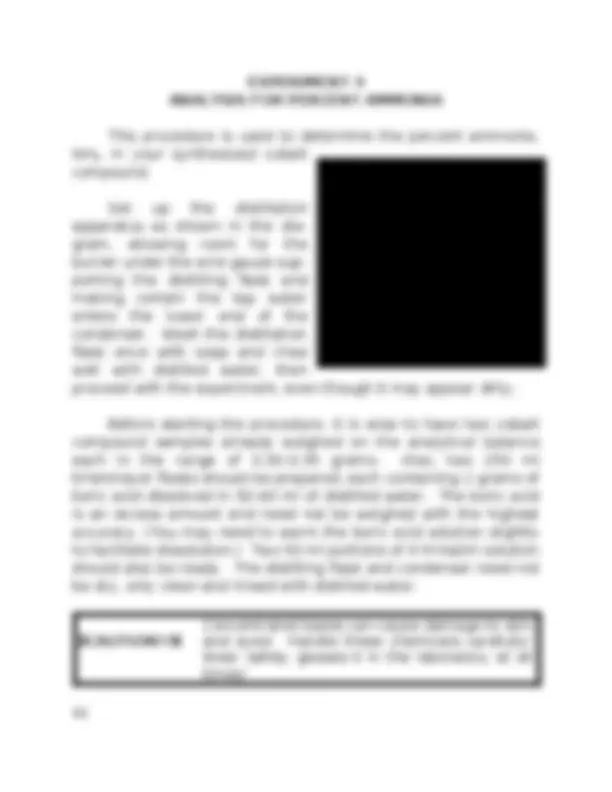
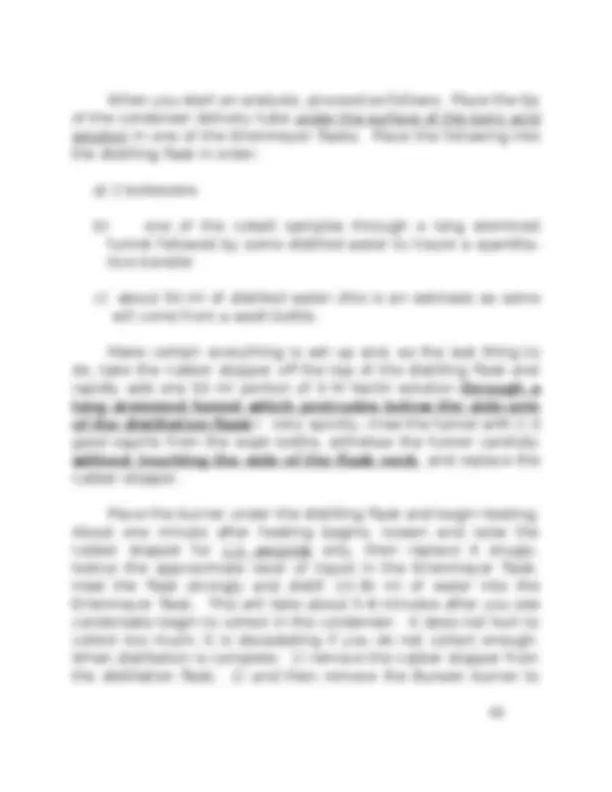
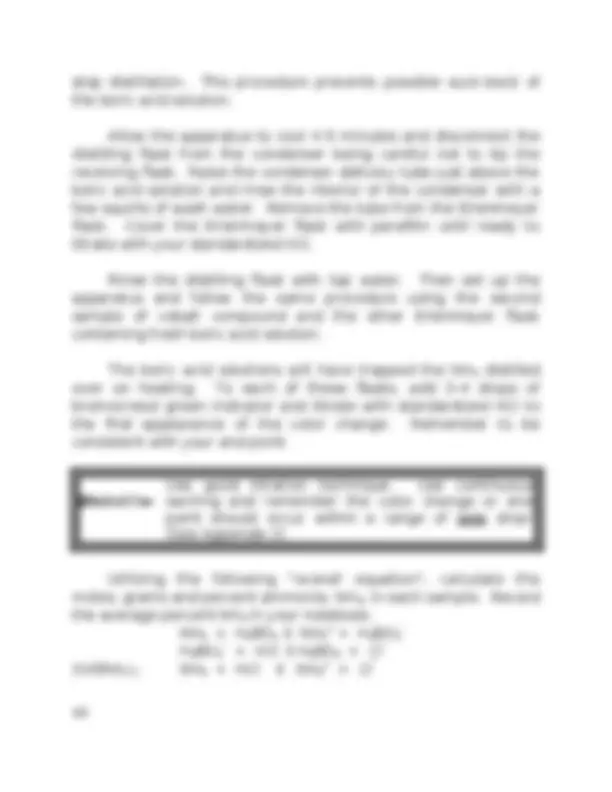
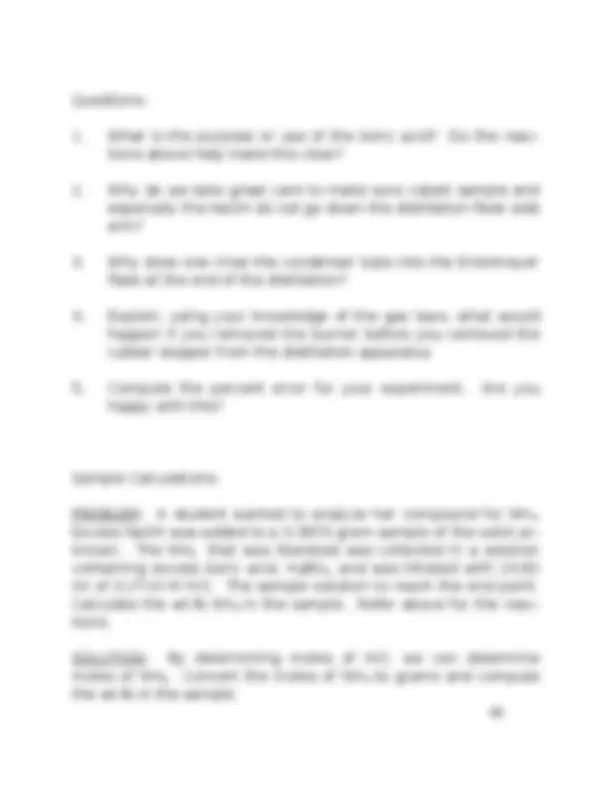
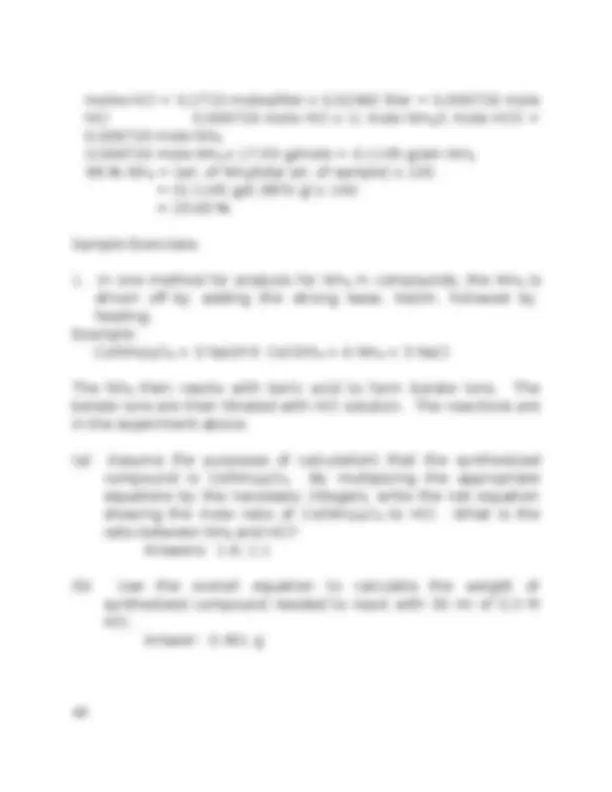

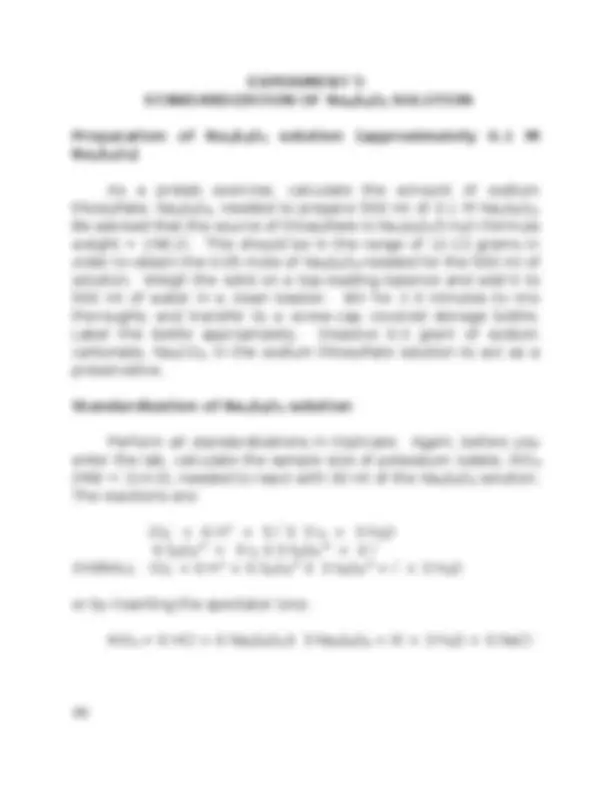
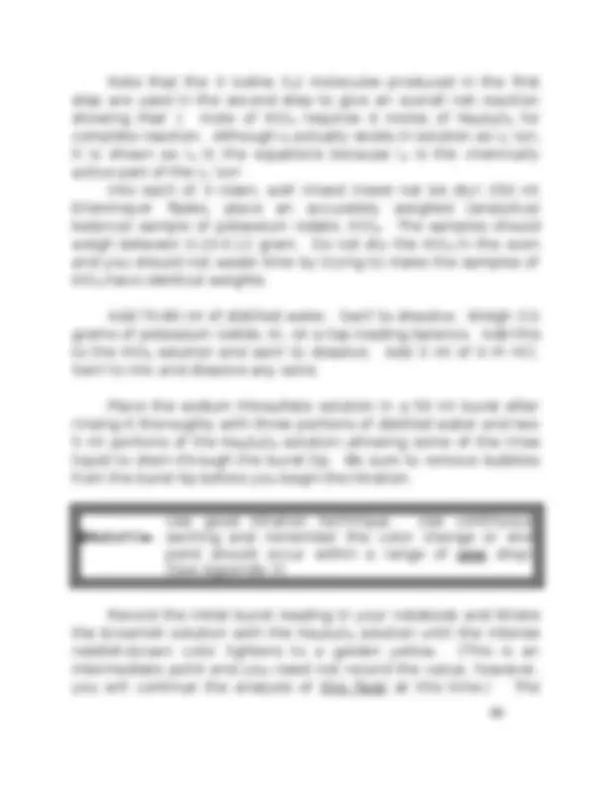
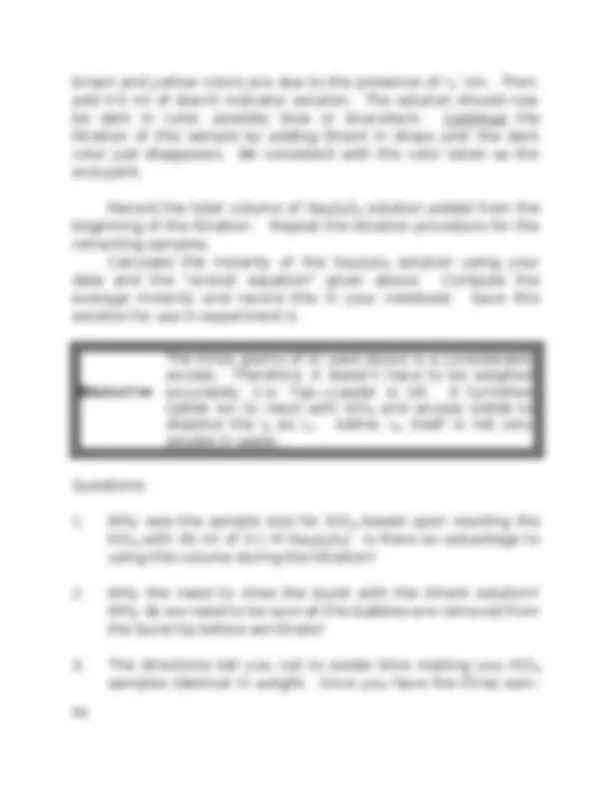
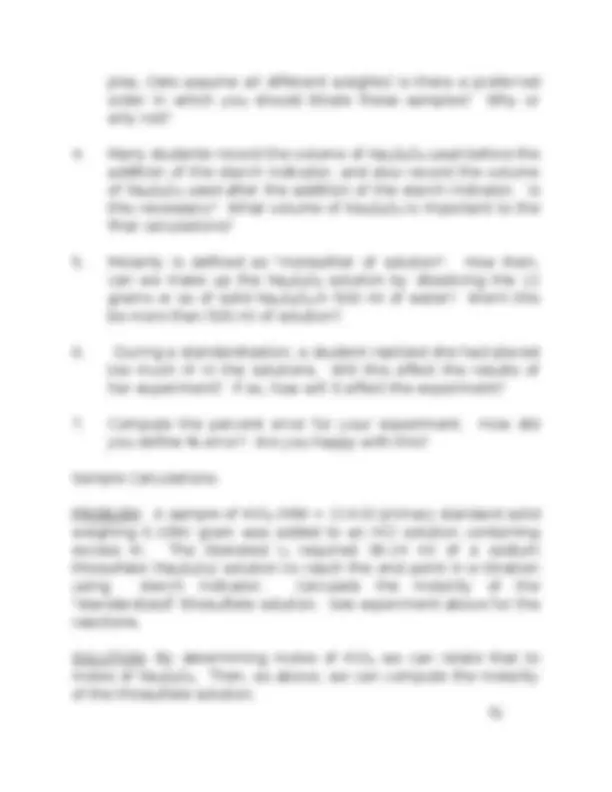
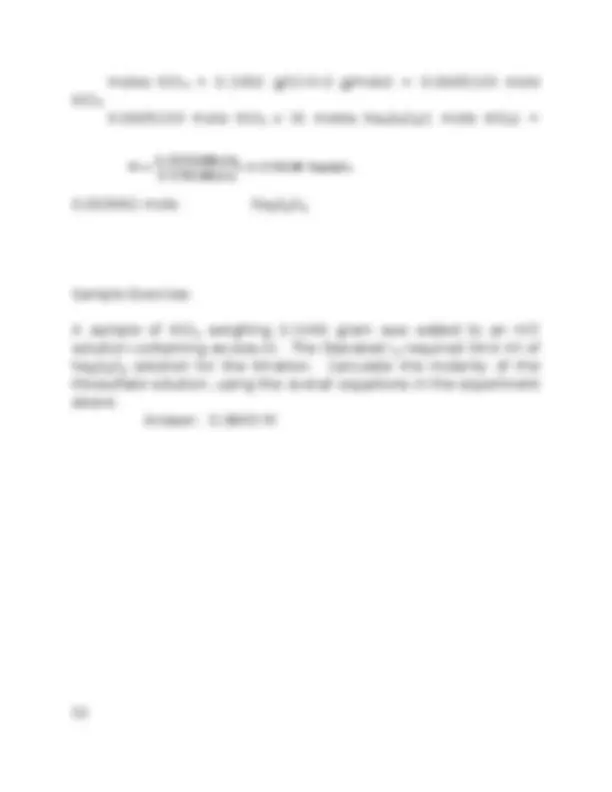
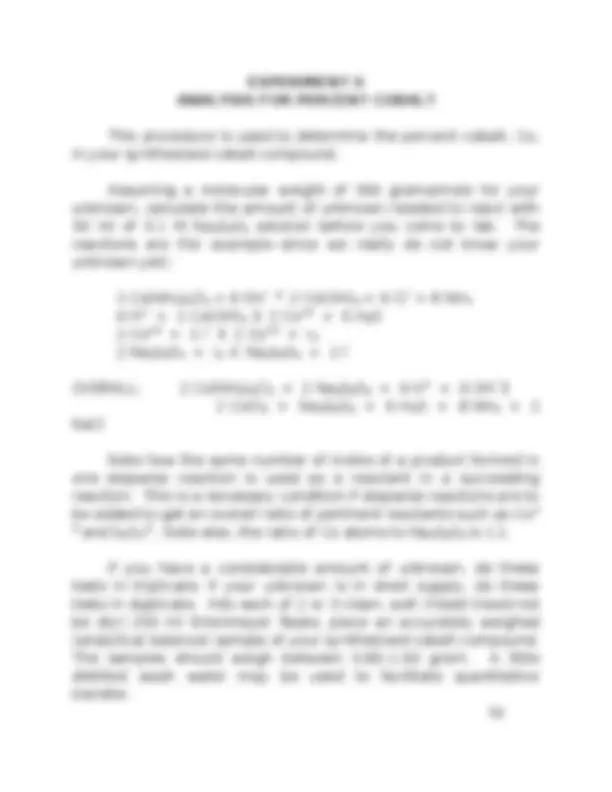
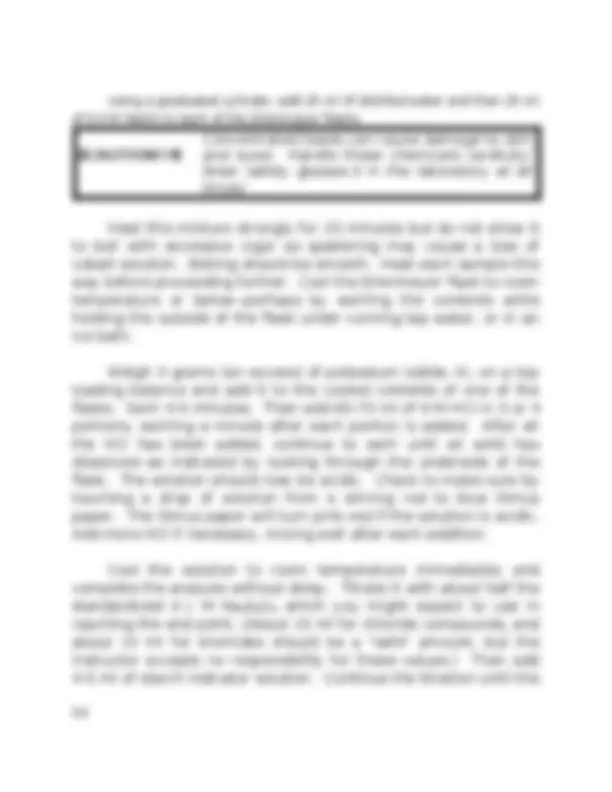
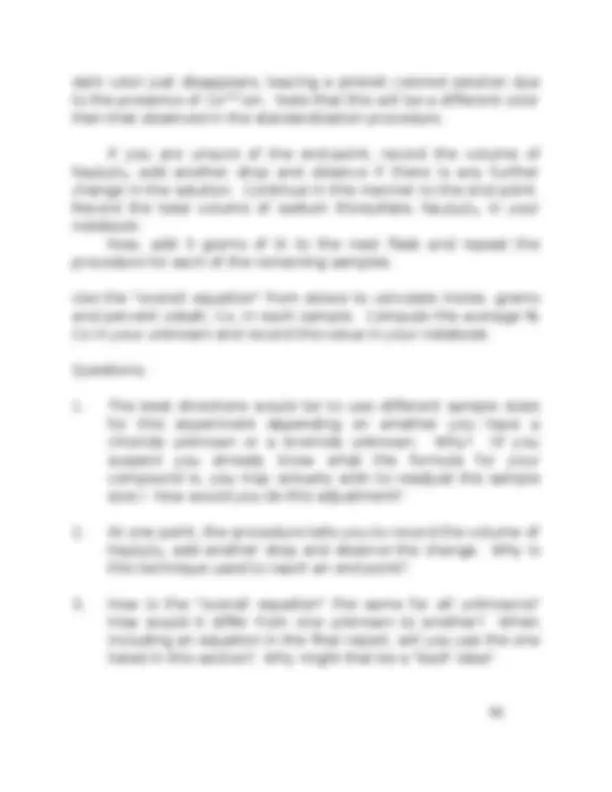
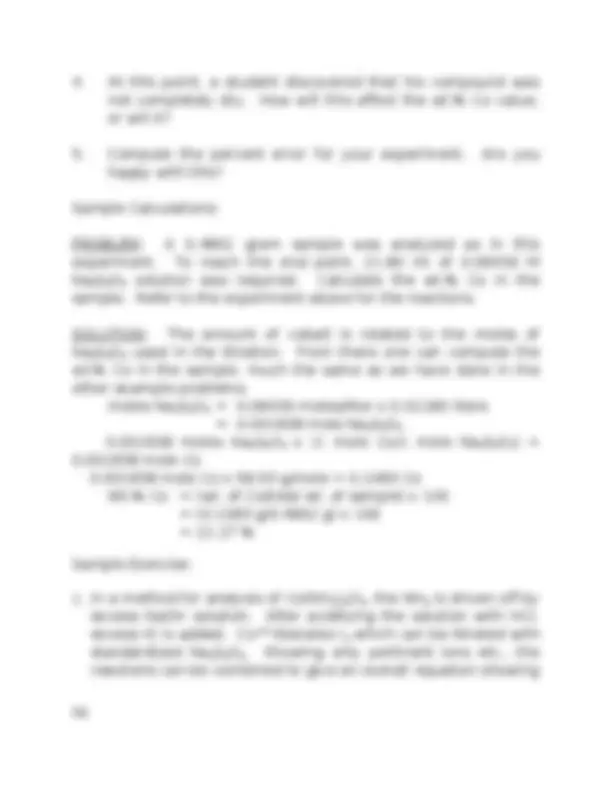
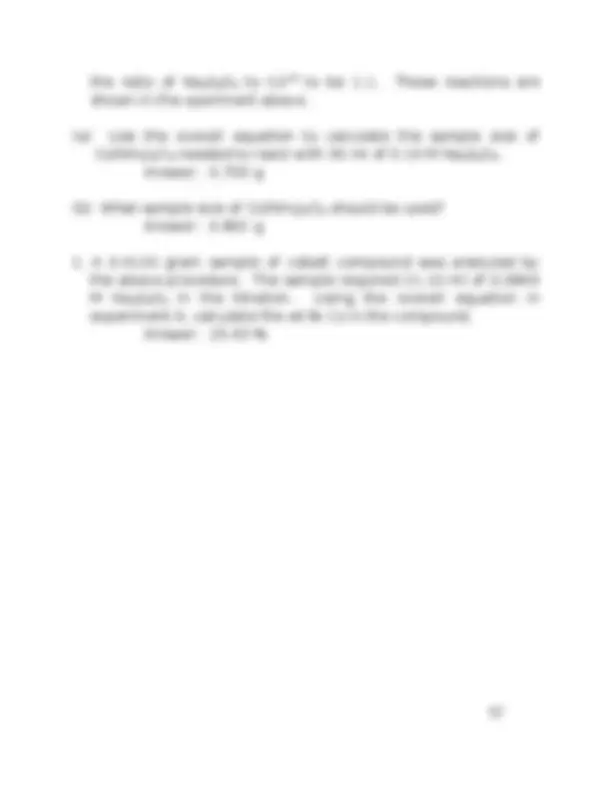
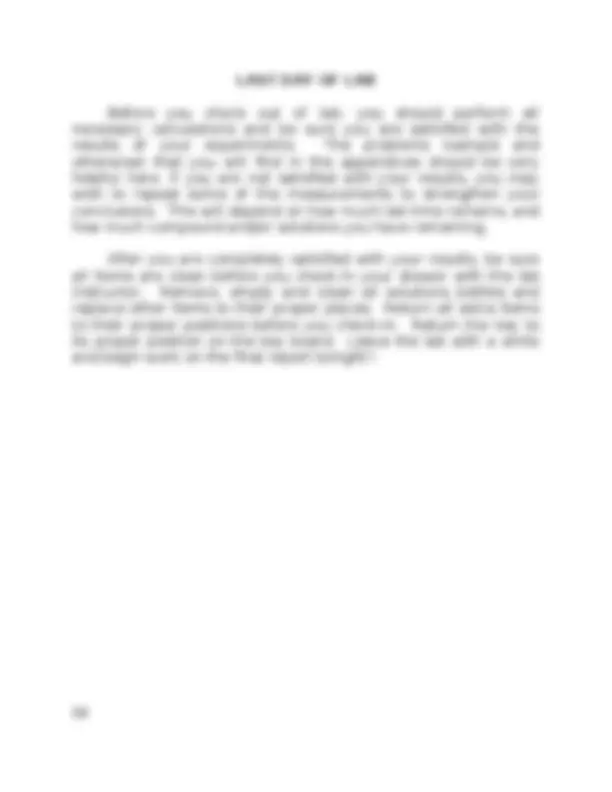
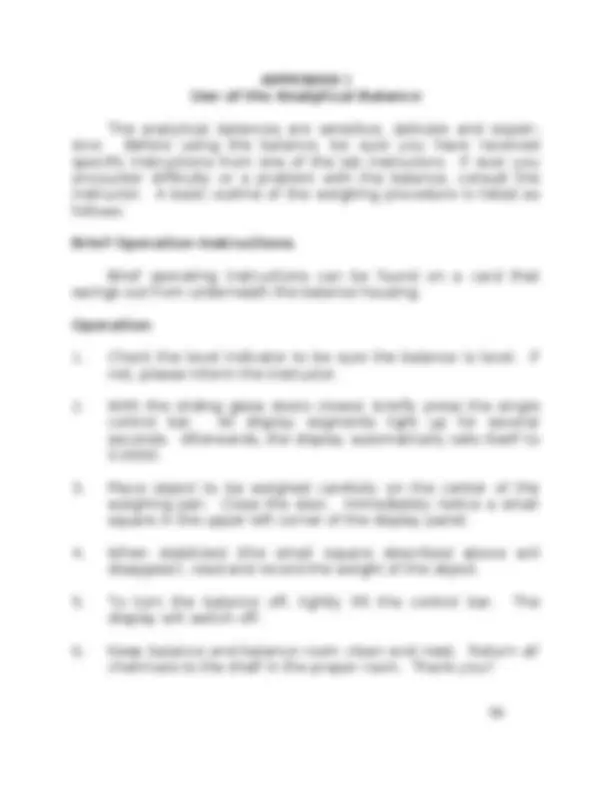

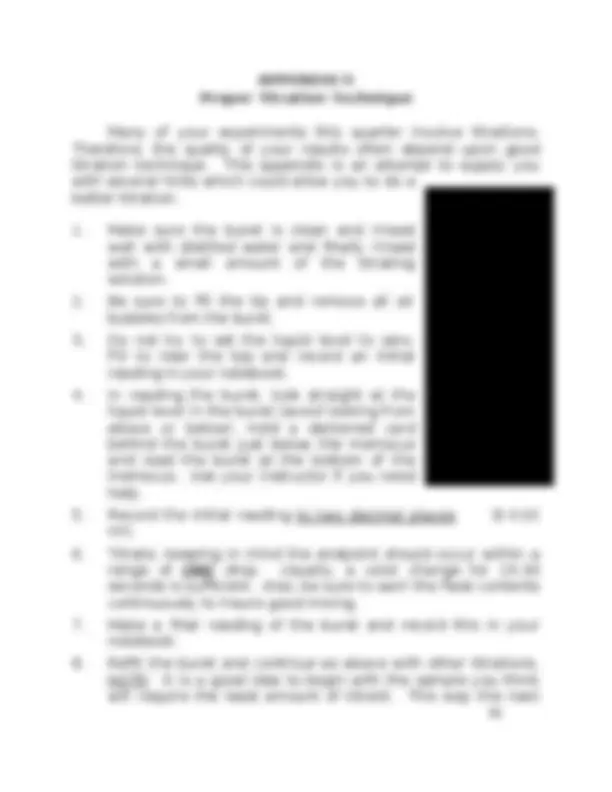
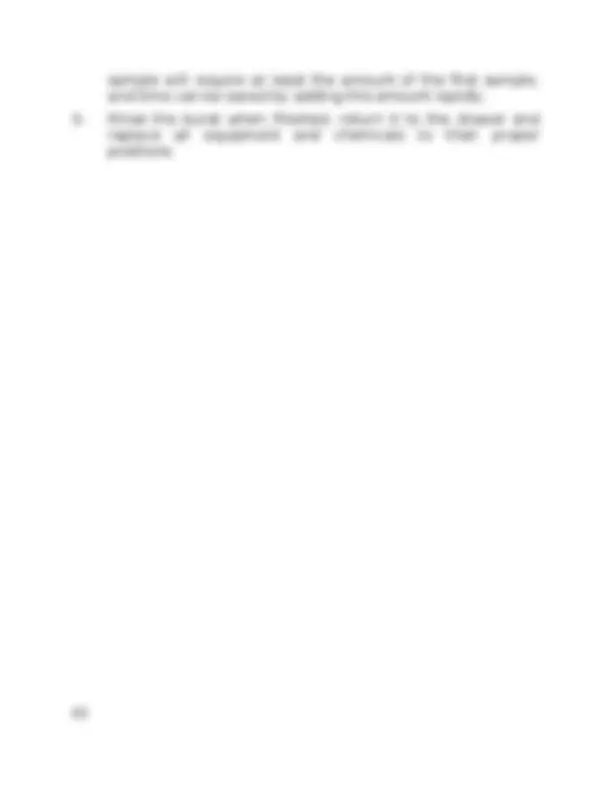
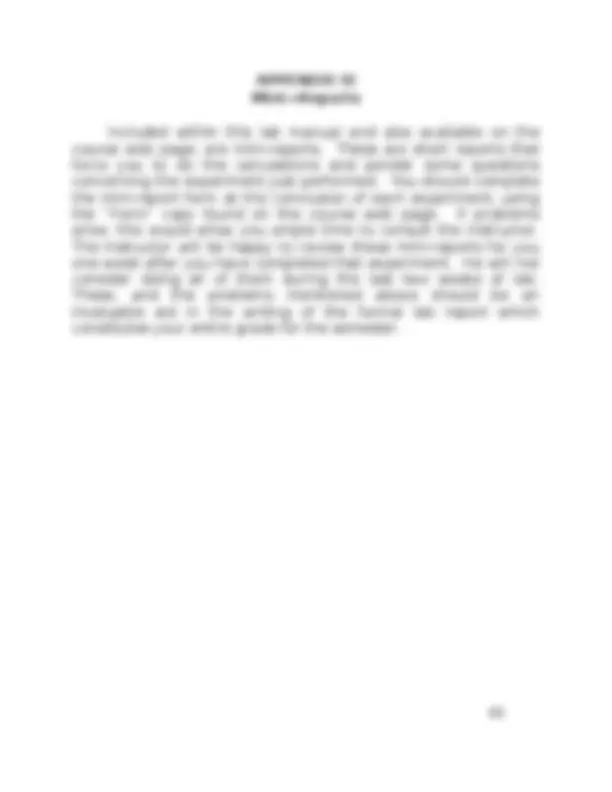
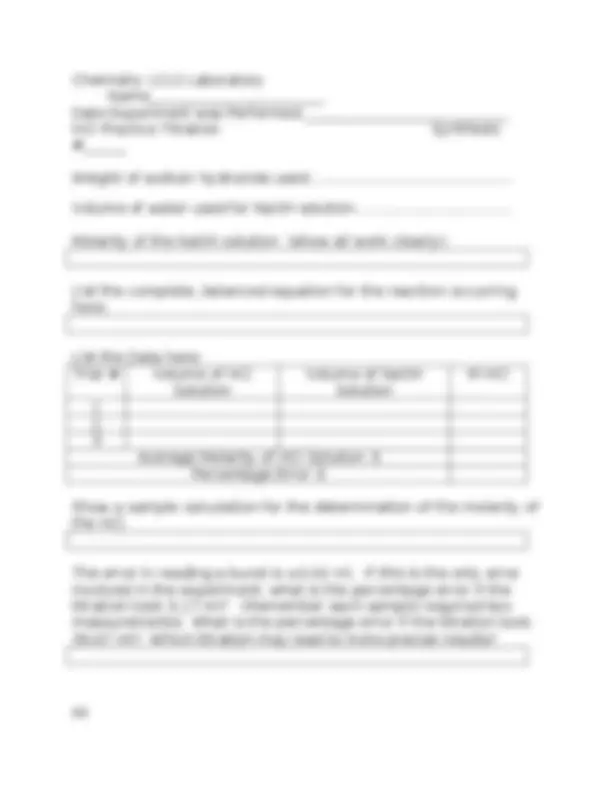

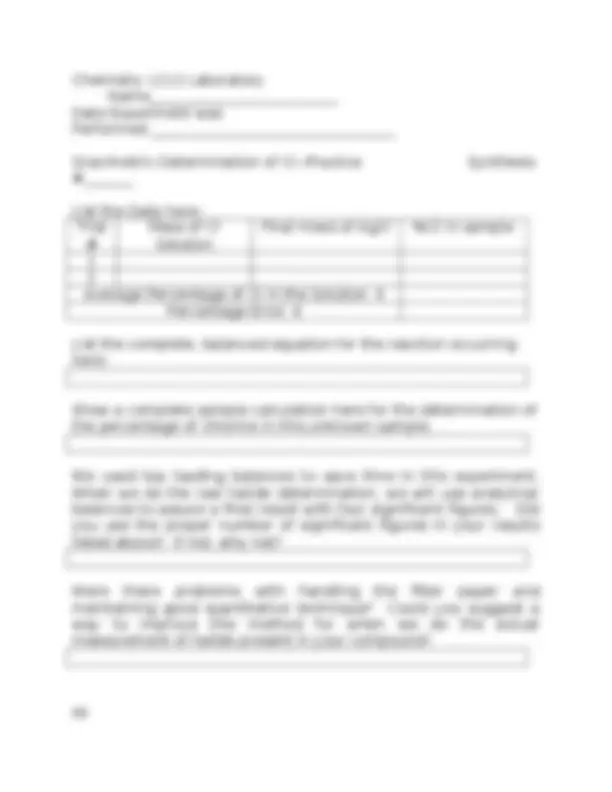

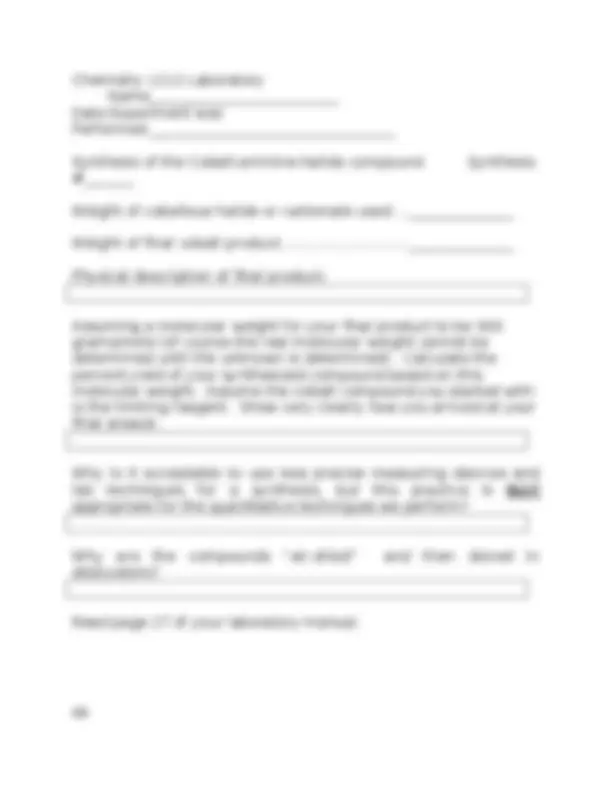
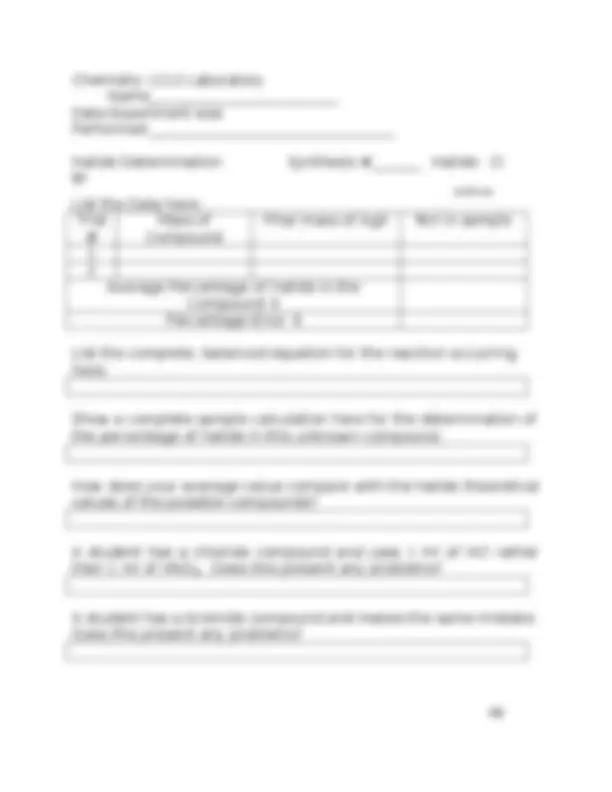
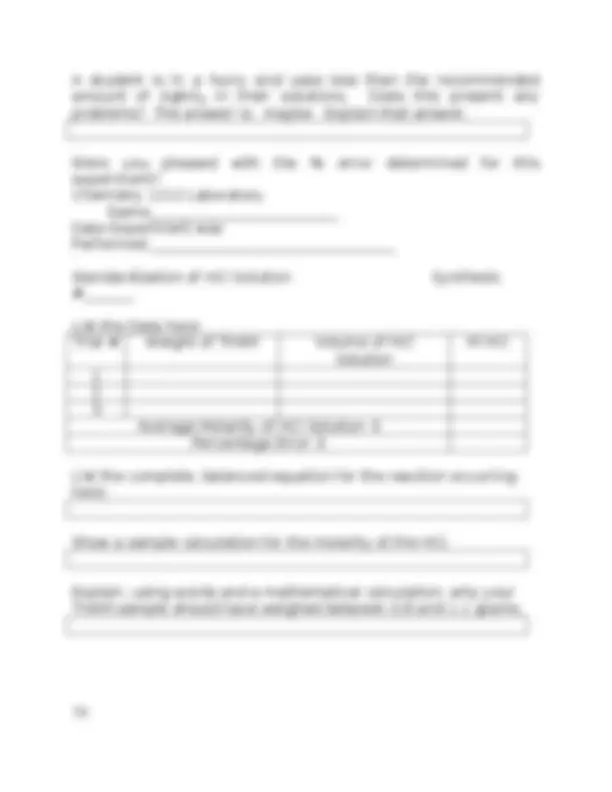
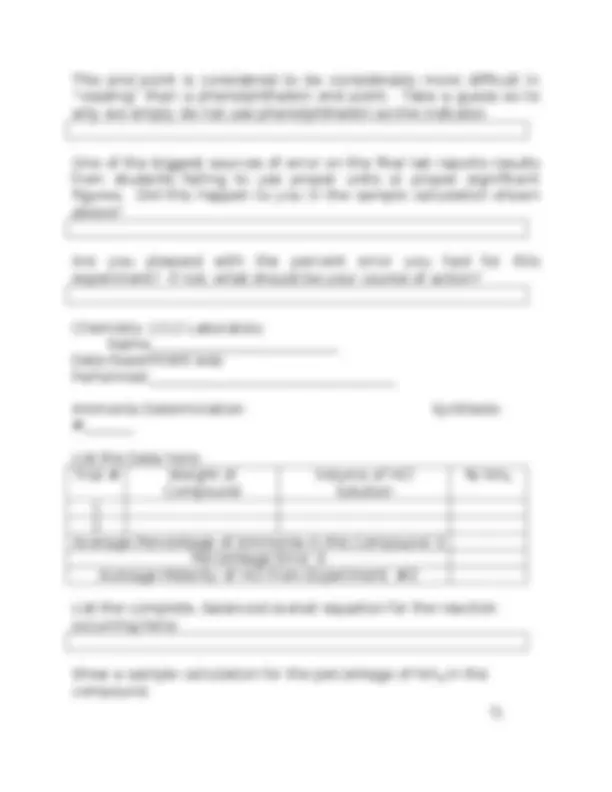
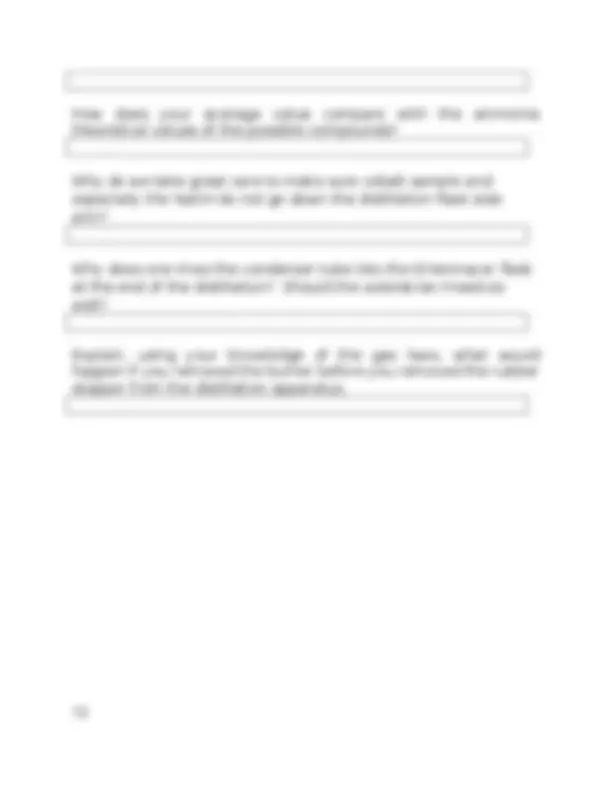


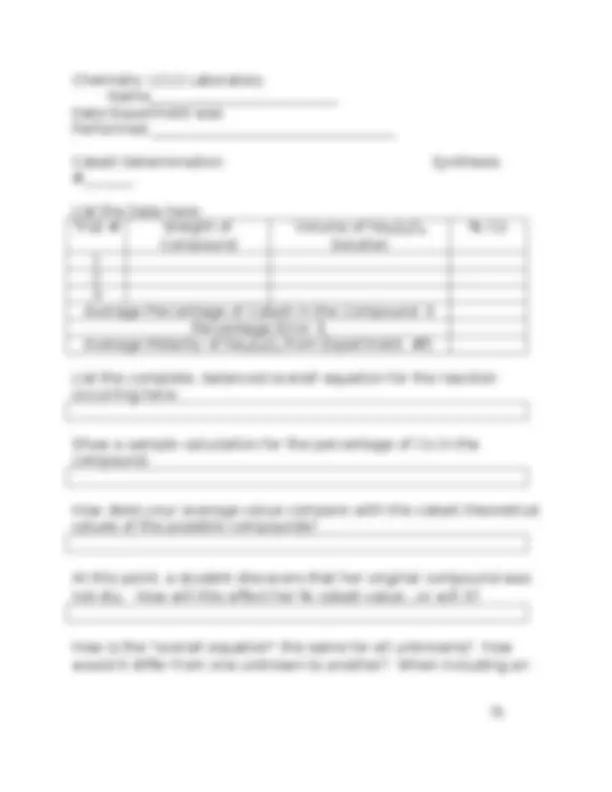
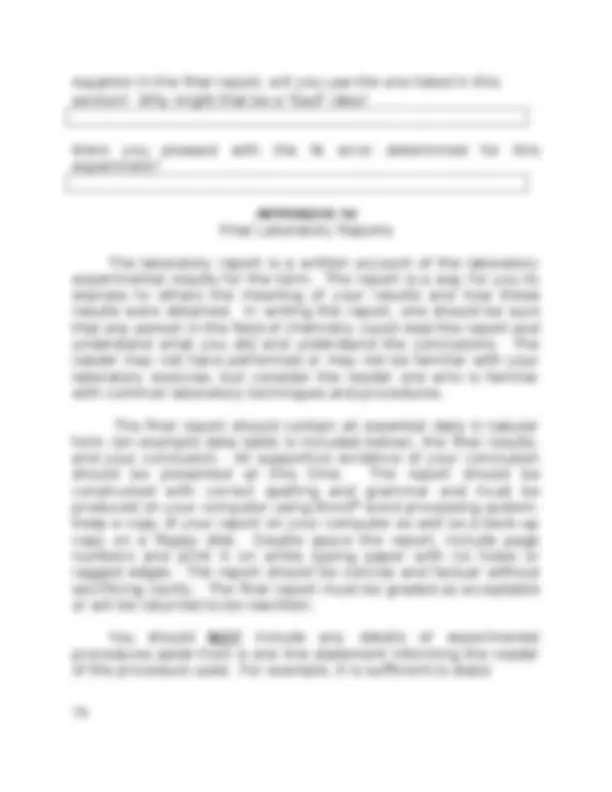
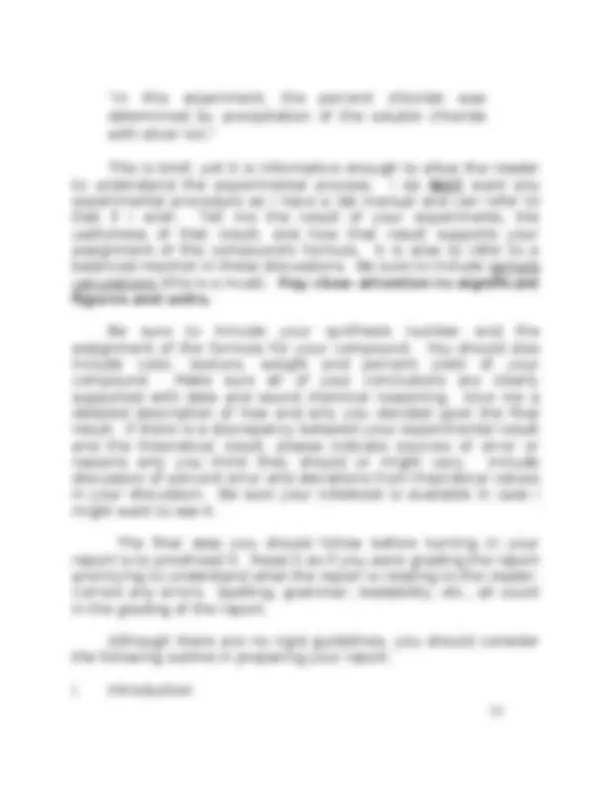
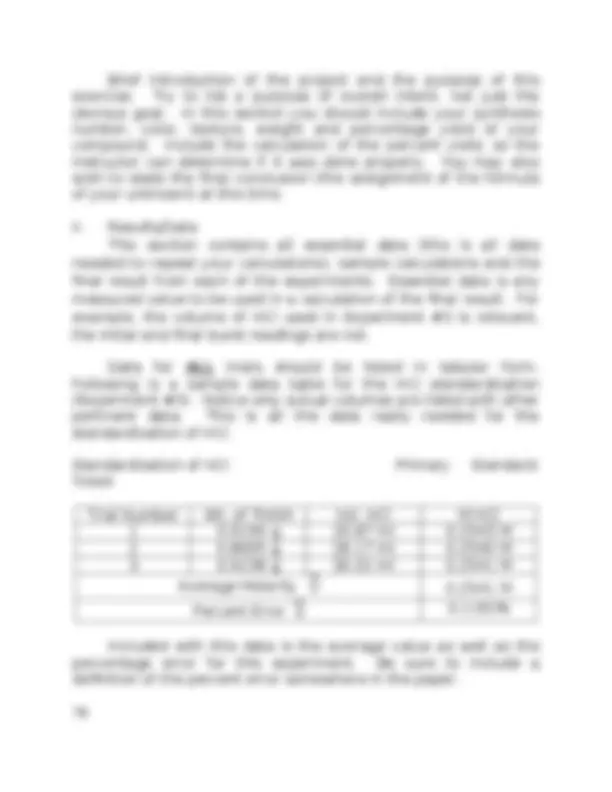
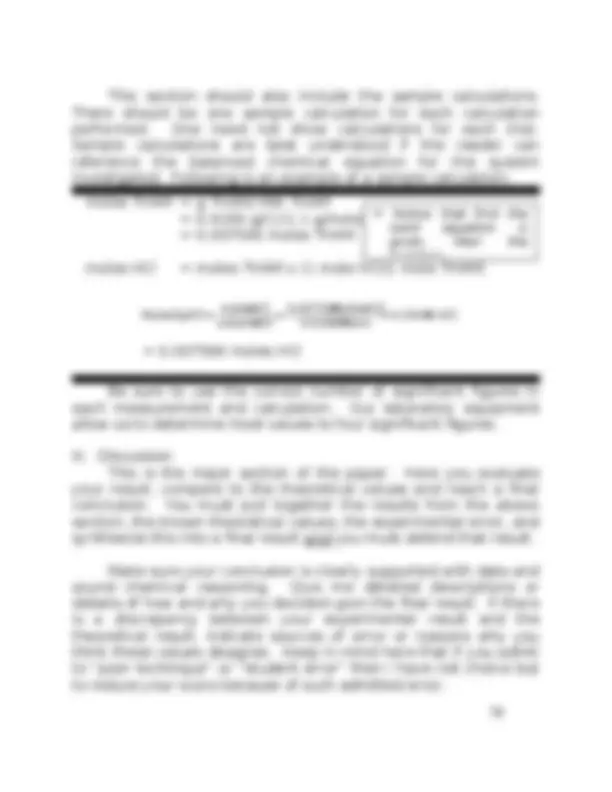

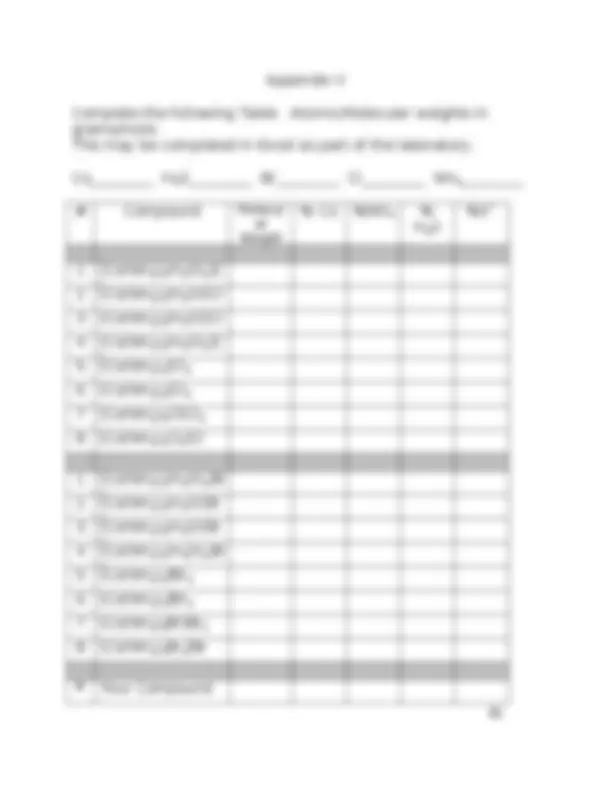
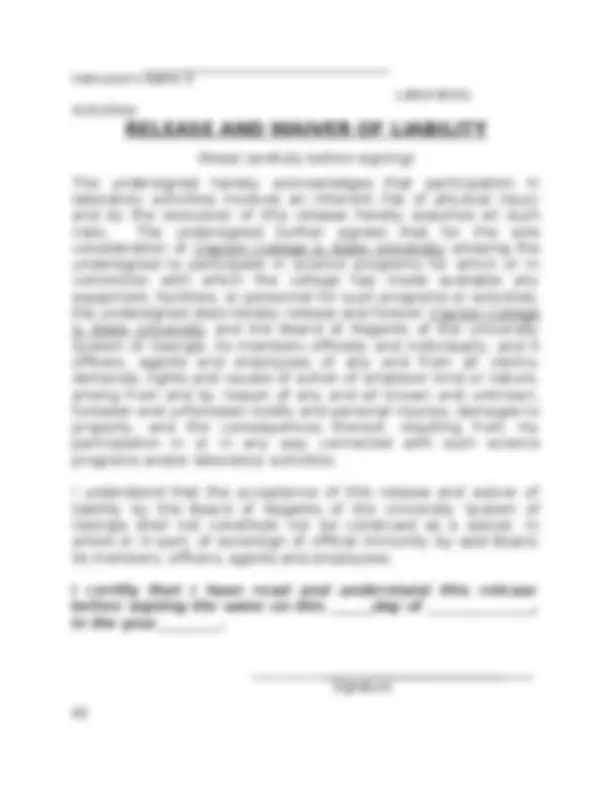

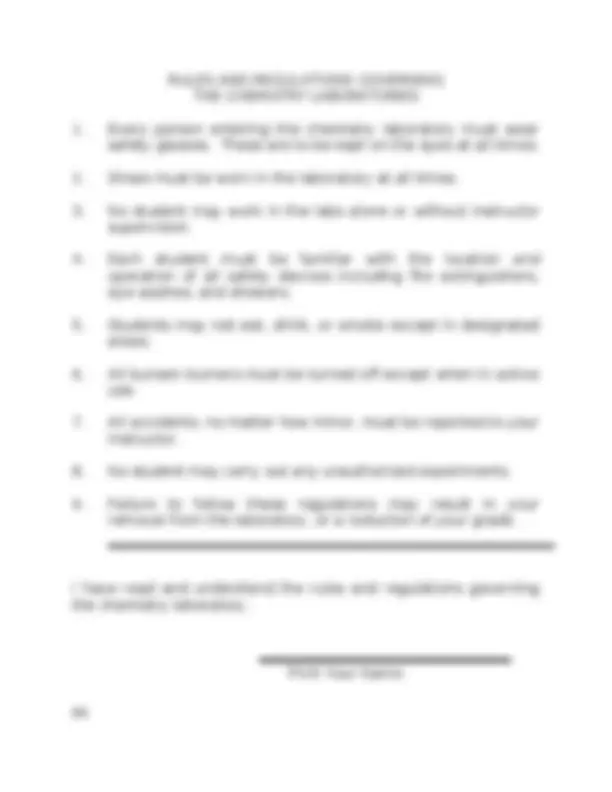

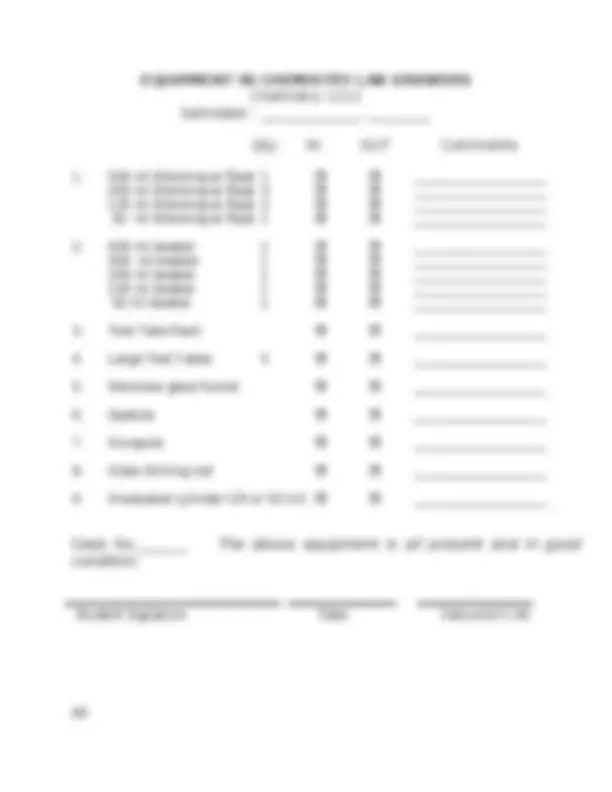


Study with the several resources on Docsity

Earn points by helping other students or get them with a premium plan


Prepare for your exams
Study with the several resources on Docsity

Earn points to download
Earn points by helping other students or get them with a premium plan
Community
Ask the community for help and clear up your study doubts
Discover the best universities in your country according to Docsity users
Free resources
Download our free guides on studying techniques, anxiety management strategies, and thesis advice from Docsity tutors
Material Type: Lab; Class: Principles of Chemistry II; Subject: Chemistry; University: Clayton State University; Term: Unknown 1989;
Typology: Lab Reports
1 / 90

This page cannot be seen from the preview
Don't miss anything!



















































































Chemistry 1212 Laboratory manual The first four (4) pages are the cover sheets. The front cover is the Title of the course, inside front cover is the periodic table, the inside back cover is the atomic weight chart, and outside back cover is the common ion sheet For the actual text part of the manual, the Title page and Table of Contents page should be printed single side only. From that point on the manual can be duplexed. Once printed, it should be bound with cover sheets made of cover stock, the preferred color is blue.
This laboratory consists of a series of exercises which are investigative in nature. This approach to the laboratory should supply you with a realistic look at situations in which practicing chemists frequently find themselves. The laboratory begins with several “practice” experiments and then continues with a semester-long experiment. You will find it necessary to learn and develop details of experimental techniques and chemical phenomena and to use good common sense in the completion of the experiment. Scientific perspective as well as mathematical perspective, critical thinking and communications are important concepts to consider throughout the laboratory experience. INTRODUCTION Man has been fascinated from antiquity with dyes and chemical compounds exhibiting color. In this course, after several “practice” experiments, you will synthesize a relatively non-volatile, colored, metal-containing compound whose constituents are held together by ionic and covalent bonds. Fol- lowing this, the majority of the laboratory time will be spent performing accurate quantitative analyses to determine the composition and a possible formula of the synthesized product. The primary goals of the Chemistry 1212 Laboratory are for the student to learn, by experience, some techniques by which one can perform accurate chemical analyses for the quantity of elements and compounds in a sample, and to begin to understand the purpose of chemical investigations. As you begin the project phase of the lab this semester, you will follow one of the synthesis procedures outlined later making a cobalt-ammonia-halide product, the exact composition of which will be unknown to you. Then you will accurately determine the percent cobalt, percent ammonia and percent halide in your synthesized product. Hopefully, by the end of the semester, your analytical results will enable you to determine the formula of this unknown.
The following outline does not necessarily represent the order in which the experiments will be performed. The order in which you, the student, perform these experiments will be assigned. Consult the course web page for these assignments.
After these “practice” exercises, the project phase of the laboratory will begin. The project phase of the laboratory begins with a synthesis of an unknown cobalt-ammonia-halide compound. There are four
I. Preparation of a cobalt-ammonia-chloride compound II. Preparation of a cobalt-ammonia-chloride compound III. Preparation of a cobalt-ammonia-bromide compound IV. Preparation of a cobalt-ammonia-bromide compound There are five additional experiments performed using the compound synthesized. These experiments will be performed in one of six possible sequences. Your actual sequence will be assigned. These remaining experiments are:
The possible analysis sequences are listed below: Experiment/sequence assigned
Week 1 in lab........... i i i ii ii ii Week 2 in lab........... ii ii ii i i i Week 3 in lab........... Everyone Does the Synthesis Week 4 in lab........... 2 5 3 3 5 5 Week 5 in lab........... 3 2 4 4 6 6 Week 6 in lab........... 4 6 2 5 3 3 Week 7 in lab........... 5 3 5 6 2 4 Week 8 in lab........... 6 4 6 2 4 2
The lab is a project type laboratory exercise and ends with a formal written laboratory report. The course begins with a lecture trying to give you an overall view of the semester-long laboratory. You will enjoy the lab and perform better if you understand the entire process. No one should miss this lecture. The second week of lab will consist of a lecture concerning the use of the computer in connection with the laboratory. Everyone should bring their computer to the lab as special calculations and web resources will be discussed. Starting with the third week of laboratory, each student will perform one of two preliminary experiments. These are designed to reinforce the idea of quantitative procedure and technique in the laboratory. Satisfactory results are expected of each student in the completion of these two exercises. Starting with the fourth week of lab, you will be assigned a synthesis procedure which you will follow to obtain one batch of product crystals. (Do NOT perform the synthesis in duplicate even though the analyses performed in the remaining experiments must be done in duplicate or triplicate.) Weighings and volume measurements in synthesis procedures are generally performed with less precise measuring apparatus such as the top-loading balances and graduated cylinders. However, a graduated beaker or flask is not sufficiently accurate to use. Furthermore, one can tolerate a slight loss of solid or liquid in transfers from one container to another during synthesis procedures, but not in the quantitative analysis procedures. The yield or amount of product obtained from your synthesis procedure should be at least 4 grams of dry product in order to have enough sample to perform several analyses on the unknown. Your final product should be stored, after air-drying, in a desiccator in your drawer. The desiccator will help keep the product dry which is essential for accurate analysis of the compound. Please label your product with your initials, name or lab drawer number as well as the synthesis number. It is not the intention of the course to provide you with a comprehensive understanding of the theory associated with the
synthesis of many metal compounds. But, the general procedures employed in the synthesis you will perform are the same as those used in the synthesis of non-volatile metal compounds involving covalent and ionic bonding. That is, mixing "raw materials" in solution, followed by partial or complete evaporation of solvent to increase concentration, cooling to increase the quantity of solid precipitate formed and collection of product by filtration. The student should note that reagents and solutions containing cobalt, ammonia and the appropriate halide ion are brought together at some point in the procedure if one wishes to prepare a compound containing these species. For example, synthesis procedure III brings together CoBr 2 , aqueous NH 3 , and eventually HBr in water solution. The student might also observe that, in synthesis procedure III, no significant amounts of Cl¯ or negative ion other than Br
. However, NH 4
containing compounds are generally much more soluble in water than metallic compounds, and therefore, none of the product is expected to contain NH 4
ion in its formula. However, there is always some possibility that H 2 O molecules may be incorporated in the structure of the precipitate, as shown in the formulas listed below. After synthesizing your cobalt-ammonia-halide product, you will follow the procedures in the next section of this lab manual and determine the percent cobalt, percent ammonia and percent halide ion in you compound. From this information, one can determine the formula of the product. In all the formulas below, you will observe that there is a total of either 4 or 6 species other than cobalt inside the square brackets. These are the "nearest neighbors" to the cobalt atoms and are covalently bonded to cobalt. One of the reasons these
The compounds synthesized will have one of the following formulas:
Before you begin your laboratory experiments, you must become acquainted with a few necessary laboratory practices in our labs. Before any laboratory work begins, you will be asked to read, understand, sign (with a witness) and return to the instructor a Laboratory Safety Rules Sheet and a Liability Waiver form. (See Appendix VI) These are also accessible from the course web page. Access them, print, complete and sign the forms and bring them to the next laboratory period. We expect that everyone will follow the safety rules outlined here and will enter the laboratory with respect for the chemicals and procedures. You will also be asked to "check-in" your lab drawer for certain items (See Appendix VI). Safety glasses are to be worn in the laboratory at all times. You MUST supply your own safety glasses as of the FIRST day in the laboratory. This rule applies to anyone in the laboratory. For safety reasons, please ask relatives, friends, children, etc. to remain in the hallway. Persons not officially enrolled in the laboratory class are not permitted in the laboratory. Use chemicals with care and forethought. Horseplay and unauthorized experiments will not be tolerated in the laboratory. The normal lab exercises include clean-up of all equipment and the replacement of all chemicals to their proper position on the shelf. All data, calculations, comments and observations are to be kept in a bound (sewn-in pages) laboratory notebook. It is advised that you wear old, but protective clothing to the lab. Please be aware of all safety devices (eyewash fountains, safety showers, bicarbonate solution, fire extinguishers, emergency exits, etc.) in case of an accident. Report all accidents, regardless of severity to the instructor. Your cooperation with all of these lab rules will help make the laboratory a pleasant experience for everyone. You may wish to become familiar with all parts of this labo- ratory, which may help in your lab work. Appendix I, for example, is a review of how to use the analytical balance. There are sample problems for lab calculations and other hints, helps, and
The laboratory you will complete this semester uses several experiments that are quantitative in nature. It is vitally important that measurements be taken carefully and accurately. In order to emphasize the importance of these measurements, you are required to do two practice experiments: one which involves a titration, and one that involves a gravimetric determination. Both will allow you to practice your laboratory skills in these two areas and reacquaint yourself with laboratory calculations requiring the correct use of significant figures. Know the rules of significant figures before attempting these experiments. Many of you may already be familiar with a titration of HCl and NaOH. This system was used as a practice exercise in Chemistry 1151. The difference here is that you will make up both solutions, titrate three samples, and check the systematic error within these three trials. A perfect titration is one that uses between 30-40 ml of titrant. If less is used, the uncertainty reading of the buret becomes too large of a percentage of the total volume, causing our experimental error to be too large. If we use too much titrant, we risk having to refill the buret before the endpoint is reached. This doubles the number of buret readings, which doubles the error of the experiment. One of your tasks in this exercise will be to calculate the amounts of HCl and NaOH which will give us a decent titration. Another aspect of a perfect titration is to hit the endpoint just right. Realize that the color change of the indicator occurs within one drop. If you pass this point, the indicator may change to the proper color, but if this is not the initial color change, you may have passed the equivalence point of the titration and your final results will be suspect. So you are not entirely in the dark, lets assume that you want to determine the actual concentration of an approximate
0.30 M solution of HCl. Lets titrate 25.00 ml of this solution with NaOH. Now you have enough information to complete the preparations for this experiment. Therefore, you must:
The laboratory you will complete this semester uses several experiments that are quantitative in nature. It is vitally important that measurements be taken carefully and accurately. In order to emphasize the importance of these measurements, you are required to do two practice experiments: one which involves a titration, and one that involves a gravimetric determination. Both will allow you to practice your laboratory skills in these two areas and reacquaint yourself with laboratory calculations requiring the correct use of significant figures. Know the rules of significant figures before attempting these experiments. To determine the amount of ionic halide present in a compound, the halide is usually precipitated with silver ion as the silver halide. By measuring the amount of the halide precipitated, and knowing the original mass of the compound, the percentage of halide present in the original compound can be determined. This type of experiment demands careful quantitative techniques to insure accurate results. Care must be taken to avoid contamination, loss of solid, and to avoid a myriad of other mistakes common to this type of procedure. A solution has been provided containing sodium chloride. Your task is to determine the percentage of Cl ¯ ion in this solution. You will do this by adding silver nitrate to cause precipitation of the chloride ion. Heating will cause the very small solid particles to clump together in a process called flocculation. By filtering the solid, drying it, weighing it, you will have the data necessary to compute the percentage halide in your sample.